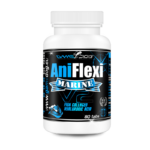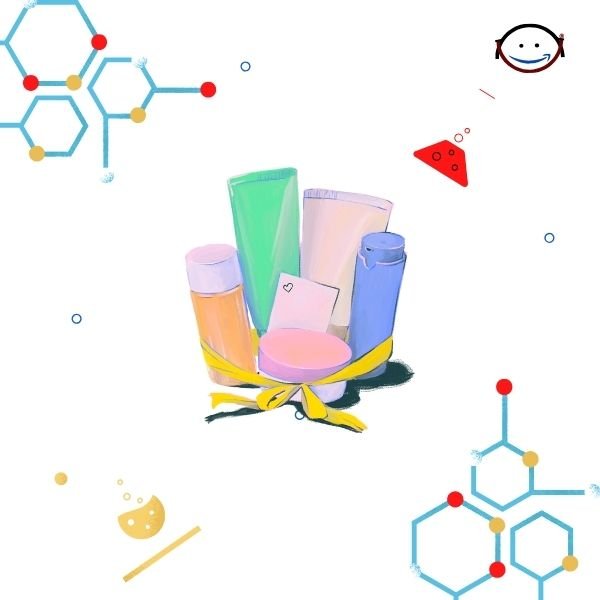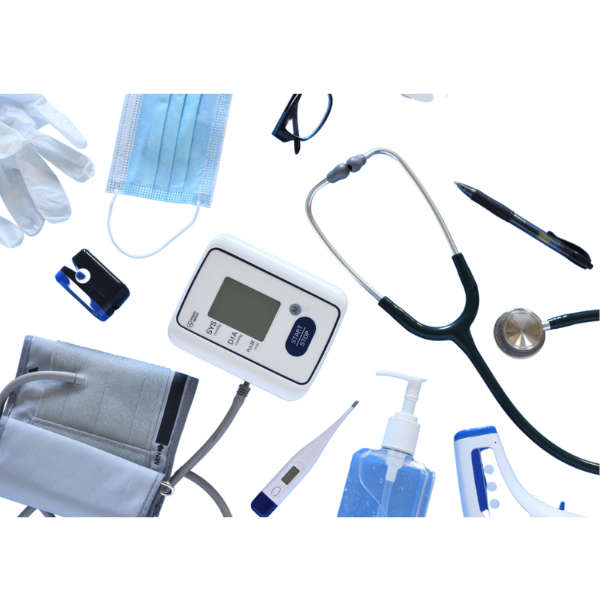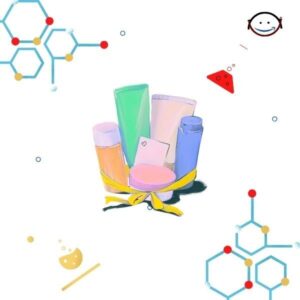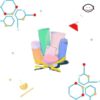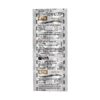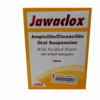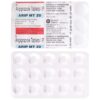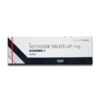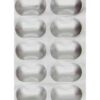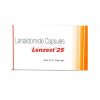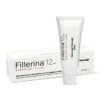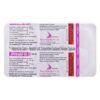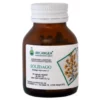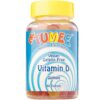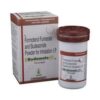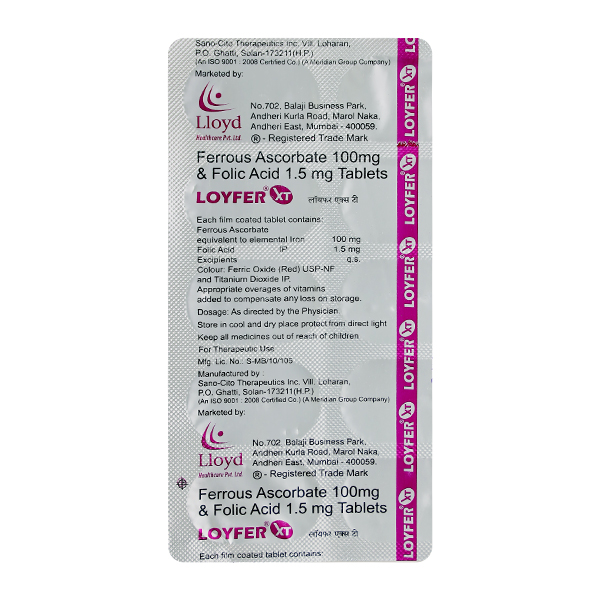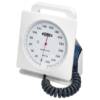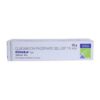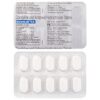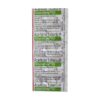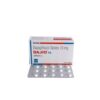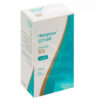-
CLOHEX NS BRUSH ₦3,708.00 QTY: 2
-
Now Essential Oils Tea Tree Oil For Aromatherapy 30ml ₦31,720.00 QTY: 1
-
BTN 5MG TAB 10`S ₦2,396.75 QTY: 1
-
JAWACLOX SUSPENSION ₦800.00 QTY: 2
-
BVERT OD 24MG TAB 10`S ₦3,465.00 QTY: 1
-
ARIP MT 20MG TAB 15`S ₦7,622.00 QTY: 1
-
RISDONE 1MG TAB 10`S ₦539.00 QTY: 1
-
STORCIT 500 Tablet 10?s ₦57,800.00 QTY: 1
-
BENFONAR CAP 10`S ₦4,537.50 QTY: 1
-
Comfort adult unisex diapers by 16 ₦11,400.00 QTY: 1
-
Lenzest 25mg Capsule 10?S ₦280,500.00 QTY: 1
-
OLIFE GOLD OLIVE OIL (200ml) ₦7,200.00 QTY: 1
-
Fillerina Densifying Filler Gel 12 HA Neck & Cleavage Grade 5 -30 ml ₦128,344.00 QTY: 1
-
PRIRAB D STRIP OF 10 CAPSULES ₦1,724.25 QTY: 1
-
Solidago Bio Arcangea? 60 Capsules 385mg ₦29,108.00 QTY: 1
-
Mr. Tumee Vitamin D Gumee 60's ₦25,376.00 QTY: 1
-
BUDAMATE 400MG TRANSCAPS ₦4,942.00 QTY: 2
-
Loyfer XT Tablet 10?S ₦30,600.00 QTY: 1
-
Accoson 6 inch Aneroid Sphygmomanometer Desk Model 0632A ₦61,500.00 QTY: 1
-
CLINKA 20GM GEL ₦2,361.50 QTY: 1
-
DOXOLIN AX TAB 10`S ₦1,801.50 QTY: 1
-
GLUCOBAY 50MG TAB 10`S ₦3,193.00 QTY: 1
-
DAJIO 10MG STRIP OF 15 TABLETS ₦3,980.75 QTY: 1
-
DOSETIL 0.05% LOTION 30ML ₦3,454.75 QTY: 1
-
Hairgrow 5% Minoxidil Topical Solution For Men 50 ml ₦8,000.00 QTY: 1
-
Sebamed Clear Face Care Gel, 50ml ₦31,500.00 QTY: 1
-
GROWMED AD VITAMIN BABY OIL (340ml) ₦9,800.00 QTY: 1
Customer matched zone "Lagos Delivery Options"
Sort by:
97–112 of 4627 Results
-
SaleAltrip 6.25 mgAltrip 6.25 mg is prescribed to treat the acute headache phase of migraine attacks with or without aura. Altrip 6.25 mg is the only oral triptan approved in the USA for the treatment of migraine in adolescent from 12 to 17 years of age.Theropeutic Class5-HT AgonistsPharmacologyAltrip 6.25 mg is a selective and potent serotonin (5-hydroxytryptamine 1B/1D) agonist. Altrip 6.25 mg binds to specific serotonin receptors on meningeal arteries inhibiting the release of vasoactive peptides and causing constriction of the arteries. It has a limited effect on arteries supplying blood to the brain and little effect on cardiac and pulmonary vessels.Dosage & Administration of Altrip 6.25 mgAcute Treatment of Migraine Attacks: The recommended dose of Altrip 6.25 mg in adults and adolescents age 12 to 17 years is 6.25 mg to 12.5 mg, with the 12.5 mg dose tending to be a more effective dose in adults. If the headache is relieved after the initial Altrip 6.25 mg malate dose but returns, the dose may be repeated after 2 hours. The maximum daily dose should not exceed 25 mg. The safety of treating an average of more than four migraines in a 30-day period has not been established.Hepatic Impairment: The recommended starting dose of Altrip 6.25 mg malate in patients with hepatic impairment is 6.25 mg. The maximum daily dose should not exceed 12.5 mg over a 24-hour periodRenal Impairment: The recommended starting dose of Altrip 6.25 mg malate in patients with severe renal impairment is 6.25 mg. The maximum daily dose should not exceed 12.5 mg over a 24-hour periodDosage of Altrip 6.25 mgAcute Treatment of Migraine Attacks: The recommended dose of Altrip 6.25 mg in adults and adolescents age 12 to 17 years is 6.25 mg to 12.5 mg, with the 12.5 mg dose tending to be a more effective dose in adults. If the headache is relieved after the initial Altrip 6.25 mg malate dose but returns, the dose may be repeated after 2 hours. The maximum daily dose should not exceed 25 mg. The safety of treating an average of more than four migraines in a 30-day period has not been established.Hepatic Impairment: The recommended starting dose of Altrip 6.25 mg malate in patients with hepatic impairment is 6.25 mg. The maximum daily dose should not exceed 12.5 mg over a 24-hour periodRenal Impairment: The recommended starting dose of Altrip 6.25 mg malate in patients with severe renal impairment is 6.25 mg. The maximum daily dose should not exceed 12.5 mg over a 24-hour periodInteraction of Altrip 6.25 mgThese drugs have been reported to cause prolonged vasospastic reactions. Cases of life-threatening serotonin syndrome have been reported during combined use of triptans and selective serotonin reuptake inhibitors (SSRIs) or serotonin norepinephrine reuptake inhibitors (SNRIs).ContraindicationsAs with other 5-HT1B/1D receptor agonists, Altrip 6.25 mg should not be used in patients with a history, symptoms or signs of ischaemic heart disease (myocardial infarction, angina pectoris, documented silent ischaemia, Prinzmetal's angina) or severe hypertension and uncontrolled mild or moderate hypertension. Concomitant administration with ergotamine, ergotamine derivatives (including methysergide) and other 5-HT1B/1D agonists is contraindicated.Side Effects of Altrip 6.25 mgSerious cardiac reactions, including myocardial infarction, have occurred following the use of Altrip 6.25 mg malate Tablets. These reactions are extremely rare and most have been reported in patients with risk factors predictive of CAD (Coronary Artery Disease).Pregnancy & LactationPregnancy Category C. There is no data regarding excretion of Altrip 6.25 mg in human milk.Precautions & WarningsHypersensitivity to the active substance or to any of the excipients. Patients with severe hepatic impairment, with a previous cerebrovascular accident (CVA) or transient ischaemic attack (TIA) Peripheral vascular disease.Storage ConditionsKeep below 30? C temperature in a dry place. Protected from light. Do not freeze. Keep out of the reach of children.Drug Classes5-HT AgonistsMode Of ActionAltrip 6.25 mg is a selective and potent serotonin (5-hydroxytryptamine 1B/1D) agonist. Altrip 6.25 mg binds to specific serotonin receptors on meningeal arteries inhibiting the release of vasoactive peptides and causing constriction of the arteries. It has a limited effect on arteries supplying blood to the brain and little effect on cardiac and pulmonary vessels.PregnancyPregnancy Category C. There is no data regarding excretion of Altrip 6.25 mg in human milk.Sku: 1736101904-2825
Altrip6.25 mg
₦1,379.40Original price was: ₦1,379.40.₦1,241.35Current price is: ₦1,241.35.₦1,379.40Original price was: ₦1,379.40.₦1,241.35Current price is: ₦1,241.35. Add to basket Quick View -
SaleAlve 60 mgAlve 60 mg is indicated in- Irritable Bowel Syndrome Bowel movement disturbances caused by small sacs or pouches in the wall of the gut (diverticular disease) Abdominal pain associated with menstrual periods (Primary dysmenorrhea) Relief of other conditions associated with spasm of involuntary muscle Theropeutic ClassAnticholinergicsPharmacologyAlve 60 mg is an anti-spasmodic medicine. It relaxes the muscles in the intestine (gut) and uterus (womb). This helps to stop the pain when the muscles become tense.Dosage & Administration of Alve 60 mgThe usual dose is 60-120 mg 3 times a day.Dosage of Alve 60 mgAdult: Orally: 60-120 mg 1-3 times daily.Interaction of Alve 60 mgThere are no drug interactions reported with this medicine.ContraindicationsParalytic ileus or known hypersensitivity to any of the ingredients.Side Effects of Alve 60 mgPossible side effects may include nausea, headache, dizziness, itching, rash and allergic reactions.Pregnancy & LactationThe safety of Alve 60 mg during pregnancy and breastfeeding is not established. It is not recommended for use during pregnancy or breastfeeding.Precautions & WarningsAvoid Alve 60 mg in patients with intestinal obstruction or paralytic ileus.Overdose Effects of Alve 60 mgCan produce hypotension and atropine like-toxic effects. Management for overdose is as like as atropine poisoning with continuation of supportive therapy for hypotension.Storage ConditionsStore in a cool and dry place, away from light. Keep all medicines out of the reach of children. Store below 25?C temperature.Use In Special PopulationsAlve 60 mg is not suitable for children under 12 years old.Drug ClassesAnticholinergicsMode Of ActionAlve 60 mg is a smooth muscle relaxant. Smooth muscle is a type of muscle that is not under voluntary control; it is the muscle present in places such as the gut and uterus. Alve 60 mg acts directly on the muscle in the gut, causing it to relax. This prevents the muscle spasm which occur in the gut in conditions such as irritable bowel syndrome and diverticular disease. Alve 60 mg also relaxes the smooth muscle in the uterus. It is therefore also used to treat painful menstruation, which is caused by muscle spasm in the uterus (dysmenorrhea).PregnancyAlthough no teratogenic effects have been reported, use during pregnancy or lactation is not recommended as evidence of safety in preclinical studies are limited.Pediatric UsesChildren under 12 years: Not recommendedSku: 1736103508-3287
Alve60 mg
₦275.55Original price was: ₦275.55.₦248.05Current price is: ₦248.05. -
SaleAlvenor 1000 gmIt is indicated in the treatment of- Acute hemorrhoidal attacks. Chronic hemorrhoidal disease. Organic and functional chronic venous insufficiency of the lower limbs with the following symptoms: heavy legs, pain, nocturnal cramps. Theropeutic ClassPhlebotonic & Vascular protecting preparationPharmacologyDiosmin and Hesperidin is a phlebotonic drug and a vascular protecting agent. It reinforces venous tone by prolonging the activity of parietal noradrenaline. Thus Diosmin and Hesperidin decreases venous capacitance, venous distensibility, and venous emptying time. Diosmin and Hesperidin protects the microcirculation by fighting the microcirculation damaging process; It combats venous inflammation by decreasing leukocyte activation, and as a consequence, by inhibiting the release of inflammatory mediators, principally free radicals and prostaglandin. Thus Diosmin and Hesperidin normalizes capillary permeability and strengthens capillary resistance. Diosmin and Hesperidin acts on the lymphatic system, It improves lymphatic drainage by increasing lymph flow and lymph oncotic pressure.Dosage & Administration of Alvenor 1000 gmTablet should be taken at meal times.Acute hemorrhoidal attacks: 3 tablets twice daily for the first 4 days, then 2 tablets twice daily for three days and if required 1 tablet twice daily as maintenance dosage.Chronic hemorrhoids: 1 tablet twice daily.Chronic venous insufficiency: 1 tablet twice daily initially for seven days. Duration may be increased depending on severity.Interaction of Alvenor 1000 gmProper data is not available.ContraindicationsProper data on contraindication is not available.Side Effects of Alvenor 1000 gmSome cases of routine gastric disorders and neurovegetative disorders (feeling of discomfort) have been reported. In this cases discontinuation of treatment is not required.Pregnancy & LactationExperimental studies in animal have not demonstrated any teratogenic effects and no harmful effect have been reported in women to date. Breast feeding is not recommended during treatmentPrecautions & WarningsIf the hemorrhoidal symptoms do not disappear within 15 days, patient should ask doctor for advice.Storage ConditionsKeep below 30?C temperature, away from light & moisture. Keep out of the reach of children.Sku: 1736100618-2440
Alvenor1000 gm
₦1,265.00Original price was: ₦1,265.00.₦1,163.80Current price is: ₦1,163.80.₦1,265.00Original price was: ₦1,265.00.₦1,163.80Current price is: ₦1,163.80. Add to basket Quick View -
SaleAlzolam 0.25 mgAlzolam 0.25 mg is indicated in- Anxiety disorder Short term relief of anxiety Anxiety associated with depression Panic disorder, with or without agoraphobia. Theropeutic ClassBenzodiazepine sedativesPharmacologyAlzolam 0.25 mg binds with high affinity to the GABA benzodiazepine receptor complex. Considerable evidence suggests that the central pharmacologic or therapeutic actions of Alzolam 0.25 mg are mediated via interaction with this receptor complex.Alzolam 0.25 mg, a benzodiazepine, bind nonspecifically to benzodiazepine receptors BNZ1, which mediates sleep, and BNZ2, which affects muscle relaxation, anticonvulsant activity, motor coordination, and memory. As benzodiazepine receptors are thought to be coupled to gamma-aminobutyric acid-A (GABAA) receptors, this enhances the effects of GABA by increasing GABA affinity for the GABA receptor. Binding of the inhibitory neurotransmitter GABA to the site opens the chloride channel, resulting in a hyperpolarized cell membrane that prevents further excitation of the cell.Dosage & Administration of Alzolam 0.25 mgMust be individualized and carefully titrated in order to avoid excessive sedation or mental and motor impairment.For Adults:?Initially 0.25 mg given 2 or 3 times daily. If required, increases may be made in 0.25 mg increments according to the severity of symptoms and patient response.It is recommended that the evening dose should be increased before the daytime doses. Very severe manifestations of anxiety may require larger initial daily doses. The optimal dosage is one that permits symptomatic control of excessive anxiety without impairment of mental and motor function. Exceptionally, it may be necessary to increase dosage to a maximum of 3 mg daily, given in divided doses.For Elderly and Debilitated Patients:?The initial dosage is 0.125 mg 2 or 3 times daily. If necessary, this dosage may be increased gradually depending on patient tolerance and response.Dosage of Alzolam 0.25 mgTreatment should be initiated with a dose of 0.25 to 0.5 mg three times daily. Depending on the response, dose may be increased at intervals of 3 to 4 days in increments of no more than 1 mg/day. The maximum dose should not exceed 4 mg/day. Occasional patients with panic disorder may need as much as 10 mg a day to achieve a successful response and in these cases periodic reassessment and consideration of dosage adjustment is required.Dosage should be individualized for maximum beneficial effect with the lowest possible dose. If side-effects occur at starting dose, dose may be lowered. When discontinuing therapy, dosage should be reduced gradually by no more than 0.5 mg every three days.In elderly patients or in patients with advanced liver disease, the usual starting dose is 0.25 mg, two or three times daily and may be gradually increased if needed and tolerated.Alzolam 0.25 mg 1 mg should be administered once daily, preferably in the morning by patients who are on multiple dosage regimens of Alzolam 0.25 mg 0.25/0.5 mg. The tablets should be taken intact, they should not be chewed, crushed, or broken.Interaction of Alzolam 0.25 mgThe CNS-depressant action of Alzolam 0.25 mg may be aggravated by concomitant use of other psychotropic drugs, anticonvulsants, antihistaminics, alcohol and oral ontraceptives.ContraindicationsContraindicated in patients with hypersensitivity to Alzolam 0.25 mg or other benzodiazepines. Alzolam 0.25 mg is also contraindicated in patients with myasthenia gravis, acute narrow angle glaucoma, during pregnancy and also in infants.Side Effects of Alzolam 0.25 mgSide effects, if occur, are generally observed at the beginning of therapy and usually disappear upon continued medication. The most frequent side effects are drowsiness and light-headedness. The other side effects, that may occur include depression, headache, confusion, dry mouth, constipation, etc.Pregnancy & LactationSafety in pregnancy has not been established, therefore its use is not recommended. Studies have suggested an increased risk of congenital malformations associated with the use of the benzodiazepines, such as chlordiazepoxide, diazepam, and also meprobamate, during the first trimester of pregnancy. Since Alzolam 0.25 mg is a benzodiazepine derivative, its administration is rarely justified in women of childbearing potential.Studies in rats have indicated that Alzolam 0.25 mg and its metabolites are secreted into the milk. Therefore, nursing should not be undertaken while a patient is receiving the drug.Precautions & WarningsBecause Alzolam 0.25 mg may produce psychological and physical dependence, the increment of dose or abrupt discontinuation of Alzolam 0.25 mg therapy should not be done without the physician's advice. The duration of therapy must be determined by the physicians. Alzolam 0.25 mg should be administered with caution to patients with hepatic or renal disease, chronic pulmonary insufficiency, or sleep apnea.Overdose Effects of Alzolam 0.25 mgManifestations of Alzolam 0.25 mg overdosage include somnolence, confusion, impaired coordination, diminished reflexes, and coma. In such cases of overdosage general supportive measures should be employed along with immediate gastric lavage.Storage ConditionsKeep below 30?C temperature, away from light & moisture. Keep out of the reach of children.Use In Special PopulationsUse in Children: Safety and efficacy of Alzolam 0.25 mg in patients under the age of 18 years has not been established.Drug ClassesBenzodiazepine sedativesMode Of ActionAlzolam 0.25 mg is a triazole analog of the 1,4-benzodiazepine class of drugs. It is an anxiolytic with hypnotic and anticonvulsive properties. Alzolam 0.25 mg is presumed to produce its effects via interacting with the Gamma Aminobutyric Acid (GABA)- benzodiazepine receptor complex. Like all benzodiazepines, it causes a dose-related CNS depressant activity varying from mild impairment of task performance to hypnosis.PregnancyAlzolam 0.25 mg has been categorized in pregnancy category D; that means, it should be avoided in pregnancy. Like other benzodiazepines, Alzolam 0.25 mg is assumed to be excreted in breast milk. Therefore, nursing should not be undertaken by mothers who must use Alzolam 0.25 mg.Pediatric UsesThe safety and effectiveness of Alzolam 0.25 mg in individuals below 18 years of age have not been established.Sku: 1736105509-3871
Alzolam0.25 mg
₦82.50Original price was: ₦82.50.₦75.90Current price is: ₦75.90. -
SaleAlzolam 0.5 mgAlzolam 0.5 mg is indicated in- Anxiety disorder Short term relief of anxiety Anxiety associated with depression Panic disorder, with or without agoraphobia. Theropeutic ClassBenzodiazepine sedativesPharmacologyAlzolam 0.5 mg binds with high affinity to the GABA benzodiazepine receptor complex. Considerable evidence suggests that the central pharmacologic or therapeutic actions of Alzolam 0.5 mg are mediated via interaction with this receptor complex.Alzolam 0.5 mg, a benzodiazepine, bind nonspecifically to benzodiazepine receptors BNZ1, which mediates sleep, and BNZ2, which affects muscle relaxation, anticonvulsant activity, motor coordination, and memory. As benzodiazepine receptors are thought to be coupled to gamma-aminobutyric acid-A (GABAA) receptors, this enhances the effects of GABA by increasing GABA affinity for the GABA receptor. Binding of the inhibitory neurotransmitter GABA to the site opens the chloride channel, resulting in a hyperpolarized cell membrane that prevents further excitation of the cell.Dosage & Administration of Alzolam 0.5 mgMust be individualized and carefully titrated in order to avoid excessive sedation or mental and motor impairment.For Adults:?Initially 0.25 mg given 2 or 3 times daily. If required, increases may be made in 0.25 mg increments according to the severity of symptoms and patient response.It is recommended that the evening dose should be increased before the daytime doses. Very severe manifestations of anxiety may require larger initial daily doses. The optimal dosage is one that permits symptomatic control of excessive anxiety without impairment of mental and motor function. Exceptionally, it may be necessary to increase dosage to a maximum of 3 mg daily, given in divided doses.For Elderly and Debilitated Patients:?The initial dosage is 0.125 mg 2 or 3 times daily. If necessary, this dosage may be increased gradually depending on patient tolerance and response.Dosage of Alzolam 0.5 mgTreatment should be initiated with a dose of 0.25 to 0.5 mg three times daily. Depending on the response, dose may be increased at intervals of 3 to 4 days in increments of no more than 1 mg/day. The maximum dose should not exceed 4 mg/day. Occasional patients with panic disorder may need as much as 10 mg a day to achieve a successful response and in these cases periodic reassessment and consideration of dosage adjustment is required.Dosage should be individualized for maximum beneficial effect with the lowest possible dose. If side-effects occur at starting dose, dose may be lowered. When discontinuing therapy, dosage should be reduced gradually by no more than 0.5 mg every three days.In elderly patients or in patients with advanced liver disease, the usual starting dose is 0.25 mg, two or three times daily and may be gradually increased if needed and tolerated.Alzolam 0.5 mg 1 mg should be administered once daily, preferably in the morning by patients who are on multiple dosage regimens of Alzolam 0.5 mg 0.25/0.5 mg. The tablets should be taken intact, they should not be chewed, crushed, or broken.Interaction of Alzolam 0.5 mgThe CNS-depressant action of Alzolam 0.5 mg may be aggravated by concomitant use of other psychotropic drugs, anticonvulsants, antihistaminics, alcohol and oral ontraceptives.ContraindicationsContraindicated in patients with hypersensitivity to Alzolam 0.5 mg or other benzodiazepines. Alzolam 0.5 mg is also contraindicated in patients with myasthenia gravis, acute narrow angle glaucoma, during pregnancy and also in infants.Side Effects of Alzolam 0.5 mgSide effects, if occur, are generally observed at the beginning of therapy and usually disappear upon continued medication. The most frequent side effects are drowsiness and light-headedness. The other side effects, that may occur include depression, headache, confusion, dry mouth, constipation, etc.Pregnancy & LactationSafety in pregnancy has not been established, therefore its use is not recommended. Studies have suggested an increased risk of congenital malformations associated with the use of the benzodiazepines, such as chlordiazepoxide, diazepam, and also meprobamate, during the first trimester of pregnancy. Since Alzolam 0.5 mg is a benzodiazepine derivative, its administration is rarely justified in women of childbearing potential.Studies in rats have indicated that Alzolam 0.5 mg and its metabolites are secreted into the milk. Therefore, nursing should not be undertaken while a patient is receiving the drug.Precautions & WarningsBecause Alzolam 0.5 mg may produce psychological and physical dependence, the increment of dose or abrupt discontinuation of Alzolam 0.5 mg therapy should not be done without the physician's advice. The duration of therapy must be determined by the physicians. Alzolam 0.5 mg should be administered with caution to patients with hepatic or renal disease, chronic pulmonary insufficiency, or sleep apnea.Overdose Effects of Alzolam 0.5 mgManifestations of Alzolam 0.5 mg overdosage include somnolence, confusion, impaired coordination, diminished reflexes, and coma. In such cases of overdosage general supportive measures should be employed along with immediate gastric lavage.Storage ConditionsKeep below 30?C temperature, away from light & moisture. Keep out of the reach of children.Use In Special PopulationsUse in Children: Safety and efficacy of Alzolam 0.5 mg in patients under the age of 18 years has not been established.Drug ClassesBenzodiazepine sedativesMode Of ActionAlzolam 0.5 mg is a triazole analog of the 1,4-benzodiazepine class of drugs. It is an anxiolytic with hypnotic and anticonvulsive properties. Alzolam 0.5 mg is presumed to produce its effects via interacting with the Gamma Aminobutyric Acid (GABA)- benzodiazepine receptor complex. Like all benzodiazepines, it causes a dose-related CNS depressant activity varying from mild impairment of task performance to hypnosis.PregnancyAlzolam 0.5 mg has been categorized in pregnancy category D; that means, it should be avoided in pregnancy. Like other benzodiazepines, Alzolam 0.5 mg is assumed to be excreted in breast milk. Therefore, nursing should not be undertaken by mothers who must use Alzolam 0.5 mg.Pediatric UsesThe safety and effectiveness of Alzolam 0.5 mg in individuals below 18 years of age have not been established.Sku: 1736104529-3582
Alzolam0.5 mg
₦165.00Original price was: ₦165.00.₦151.80Current price is: ₦151.80. -
SaleAmantril 100 mgAmantril 100 mg is indicated for- Treatment of parkinsonism Treatment of drug-induced extrapyramidal reactions Prophylaxis and treatment of signs and symptoms of infection caused by various strains of influenza A virus Theropeutic ClassRespiratory viral infections (Influenza)PharmacologyThe mechanism by which amantadine exerts its antiviral activity is not clearly understood. It appears to mainly prevent the release of infectious?viral?nucleic acid?into the host cell by interfering with the function of the transmembrane domain?of the viral M2 protein. In certain cases, amantadine is also known to prevent virus assembly during virus replication. It does not appear to interfere with the immunogenicity of inactivated influenza A virus vaccine.Amantadine inhibits the replication of influenza A virus isolates from each of the subtypes, i.e., H1N1, H2N2 and H3N2. It has very little or no activity against influenza?B virus?isolates. A quantitative relationship between the?in vitrosusceptibility of influenza A virus to amantadine and the clinical response to therapy has not been established in man.?Sensitivity?test results, expressed as the concentration of amantadine required to inhibit by 50% the growth of virus (ED50) in tissue culture vary greatly (from 0.1 ?g/mL to 25.0 ?g/mL) depending upon the assay protocol used, size of virus inoculum, isolates of influenza A virus strains tested, and the cell type used. Host cells in tissue culture readily tolerated amantadine up to a concentration of 100 ?g/mL.Dosage & Administration of Amantril 100 mgParkinson's disease: Adult: Initially, 100 mg/day, increased to 100 mg bid after a wk or more. Max dose: 400 mg daily. Elderly: >65 yr: Lowest effective dose. Prophylaxis of influenza A: Adult: 100 mg daily for up to 6 wk; when used with influenza vaccination: only up to 3 wk after vaccination. Child: 10-15 yr: 100 mg daily. Influenza A: Adult: 100 mg daily for 5 days. Elderly: >65 yr: Daily dose of 1 day. Herpes zoster in immunocompromised patients: Adult: 100 mg bid for 14 days, continued for another 14 days if pain persists. Dosage of Amantril 100 mgParkinson's disease: Adult: Initially, 100 mg/day, increased to 100 mg bid after a wk or more. Max dose: 400 mg daily. Elderly: >65 yr: Lowest effective dose. Prophylaxis of influenza A: Adult: 100 mg daily for up to 6 wk; when used with influenza vaccination: only up to 3 wk after vaccination. Child: 10-15 yr: 100 mg daily. Influenza A: Adult: 100 mg daily for 5 days. Elderly: >65 yr: Daily dose of 1 day. Herpes zoster in immunocompromised patients: Adult: 100 mg bid for 14 days, continued for another 14 days if pain persists. Interaction of Amantril 100 mgConcurrent administration of Amantadine and anticholinergic agents or levodopa may increase confusion, hallucinations, nightmares, gastro-intestinal disturbances, or other atropine-like side effects. Psychotic reactions have been observed in patients receiving Amantadine and Levodopa.Concurrent administration of Amantadine and drugs or substances (e.g. alcohol) acting on the CNS may result in additive CNS toxicity. Close observation is recommended.ContraindicationsAmantadine is contraindicated in patients with known hypersensitivity to the active substances or to any of the excipients.Side Effects of Amantril 100 mgThe adverse effects of Amantadine are generally mild and, when they occur, may diminish or cease after a week or more on the medication. The most commonly reported side effects include nausea, dizziness/ lightheadedness, and insomnia.Other side effects may include edema of ankles, livedo reticularis; anxiety, elevation of mood, headache, lethargy, hallucinations, ataxia, slurred speech, blurred vision, loss of concentration, nervousness, depression, myalgia, palpitations, orthostatic hypotension, dry mouth, anorexia, constipation and diaphoresis.Pregnancy & LactationPregnancy category C. No well-controlled studies have been done in pregnant women to evaluate Amantadine's safety. Amantadine may be used during pregnancy when the potential benefits outweigh the potential but unknown risks to the fetus.Amantadine is excreted into breast milk in low concentrations. As no information is available on the effects in infants, therefore amantadine should be used cautiously in women who are breastfeeding.Precautions & WarningsAmantadine should not be discontinued abruptly in patients with Parkinson's disease since a few patients have experienced a parkinsonian crisis, i.e., a sudden marked clinical deterioration, when this medication was suddenly stopped. The dose of anticholinergic drugs or of Amantril 100 mg should be reduced if atropine-like effects appear when these drugs are used concurrently. Abrupt discontinuation may also precipitate delirium, agitation, delusions, hallucinations, paranoid reaction, stupor, anxiety, depression and slurred speech.Storage ConditionsStore at 20-25?C in dry place. Protect from light.Use In Special PopulationsPatients with renal impairment: ?The dose should be reduced. This can be achieved by either reducing the total daily dose, or by increasing the dosage interval in accordance with the creatinine clearance. For example: CrCl 35?ml/min:?100mg every day Patients with hepatic impairment: Use with cautionDrug ClassesRespiratory viral infections (Influenza)Mode Of ActionThe mechanism by which amantadine exerts its antiviral activity is not clearly understood. It appears to mainly prevent the release of infectious?viral?nucleic acid?into the host cell by interfering with the function of the transmembrane domain?of the viral M2 protein. In certain cases, amantadine is also known to prevent virus assembly during virus replication. It does not appear to interfere with the immunogenicity of inactivated influenza A virus vaccine.Amantadine inhibits the replication of influenza A virus isolates from each of the subtypes, i.e., H1N1, H2N2 and H3N2. It has very little or no activity against influenza?B virus?isolates. A quantitative relationship between the?in vitrosusceptibility of influenza A virus to amantadine and the clinical response to therapy has not been established in man.?Sensitivity?test results, expressed as the concentration of amantadine required to inhibit by 50% the growth of virus (ED50) in tissue culture vary greatly (from 0.1 ?g/mL to 25.0 ?g/mL) depending upon the assay protocol used, size of virus inoculum, isolates of influenza A virus strains tested, and the cell type used. Host cells in tissue culture readily tolerated amantadine up to a concentration of 100 ?g/mL.PregnancyPregnancy category C. No well-controlled studies have been done in pregnant women to evaluate Amantadine's safety. Amantadine may be used during pregnancy when the potential benefits outweigh the potential but unknown risks to the fetus.Amantadine is excreted into breast milk in low concentrations. As no information is available on the effects in infants, therefore amantadine should be used cautiously in women who are breastfeeding.Pediatric UsesPatients with renal impairment: ?The dose should be reduced. This can be achieved by either reducing the total daily dose, or by increasing the dosage interval in accordance with the creatinine clearance. For example: CrCl 35?ml/min:?100mg every day Patients with hepatic impairment: Use with cautionSku: 1736105082-3746
Amantril100 mg
₦5,500.00Original price was: ₦5,500.00.₦4,950.00Current price is: ₦4,950.00.₦5,500.00Original price was: ₦5,500.00.₦4,950.00Current price is: ₦4,950.00. Add to basket Quick View -
SaleAmaryl M 1 mg+500 mgThis tablet is indicated as an adjunct to diet and exercise in type 2 diabetes mellitus patients- In case that the monotherapy with glimepiride or metformin does not result in adequate glycemic control. Replacement of combination therapy of glimepiride and metformin. Theropeutic ClassCombination Oral hypoglycemic preparationsPharmacologyGlimepiride, a member of the sulfonylurea class, and Rosiglitazone maleate, a member of the thiazolidinedione class. The primary mechanism of action of Glimepiride in lowering blood glucose appears to be dependent on stimulating the release of insulin from functioning pancreatic beta-cells. In addition, extrapancreatic effects may also play a role in the activity of sulfonylureas such as Glimepiride. This is supported by both preclinical and clinical studies demonstrating that Glimepiride administration can lead to increased sensitivity of peripheral tissues to insulin.Metformin is an antihyperglycemic agent which improves glucose tolerance in patients with type 2 diabetes, lowering both basal and postprandial plasma glucose. Metformin reduces hepatic glucose production by inhibiting gluconeogenesis and glycogenolysis, and stimulates intracellular glycogen synthesis by acting on glycogen synthase. In muscle, it increases insulin sensitivity, improving peripheral glucose uptake and utilization. Metformin also delays intestinal glucose absorption. Metformin increases the transport capacity of all types of membrane glucose transporters (GLUTs) known to date.Dosage & Administration of Amaryl M 1 mg+500 mgThis combination should be taken once or twice a day during a meal. Maximum single dose of metformin is 1000 mg. Maximum daily dose is 8 mg for glimepiride and 2 000 mg for metformin. Only for a small number of patients more effective daily dose is more than 6 mg of glimepiride. Initial dose of this combination should not exceed daily dose of glimepiride and metformin already being taken by a patient in order to avoid hypoglycemia.Typically the dose of medicine this combination should be determined by the target glucose concentration in blood. It is necessary to take the lowest dose that would be sufficient to achieve the desired metabolic control. During treatment with medicine this combination, concentration of glucose in blood should be regularly determined. In addition, regular control of percentage of glycated hemoglobin is also recommended. Incorrect administration of the medicine, such as skipping of the next dose, should never be replenished by subsequent administration of higher doses.Dosage of Amaryl M 1 mg+500 mg The dosage of this tablet is governed by the desired blood glucose level. The dosage of this tablet must be the lowest which is sufficient to achieve the desired metabolic control. During treatment with this tablet glucose levels in blood and urine must be measured regularly. Mistakes, e.g. forgetting to take a dose, must never be corrected by subsequently taking a larger dose. As an improvement in control of diabetes is, in itself, associated with higher insulin sensitivity, glimepiride requirements may fall as treatment proceeds. To avoid hypoglycaemia timely dose reduction or cessation of this tablet therapy must therefore be considered. The highest recommended dose per day should be 8 mg of glimepiride and 2000 mg of metformin. In order to avoid hypoglycaemia the starting dose of this tablet should not exceed the daily doses of glimepiride or metformin already being taken. When switching from combination therapy of glimepiride plus metformin as separate tablets, this combination should be administered on the basis of dosage currently being taken. Administration of Amaryl M 1 mg+500 mgThis tablet must be swallowed whole and not crushed or chewed.Interaction of Amaryl M 1 mg+500 mgFor Glimepiride: Glimepiride is metabolized by cytochrome P450 2C9 (CYP2C9). This should be taken into account when glimepiride is coadministered with inducers (e.g. rifampicin) or inhibitors (e.g. fuconazole) of CYP 2C9. Potentiation of the blood-glucose-lowering efect and, thus, in some instances hypoglycaemia may occur when one of the following drugs is taken, for example: insulin and other, oral antidiabetics; ACE inhibitors; anabolic steroids and male sex hormones; chloramphenicol; coumarin derivatives; cyclophosphamide; disopyramide; fenfuramine; fenyramidol; fbrates; fuoxetine; guanethidine; ifosfamide; MAO inhibitors; miconazole; fuconazole; para-aminosalicylic acid; pentoxifylline (high dose parenteral); phenylbutazone; azapropazone; oxyphenbutazone; probenecid; quinolones; salicylates; sulfnpyrazone; clarithromycin; sulfonamide antibiotics; tetracyclines; tritoqualine; trofosfamide. Weakening of the blood-glucose-lowering efect and, thus raised blood glucose levels may occur when one of the following drugs is taken, for example: acetazolamide; barbiturates; corticosteroids; diazoxide; diuretics; epinephrine (adrenaline) and other sympathomimetic agents; glucagon; laxatives (after protracted use); nicotinic acid (in high doses); oestrogens and progestogens; phenothiazines; phenytoin; rifampicin; thyroid hormones. H2 receptor antagonists, beta-blockers, clonidine and reserpine may lead to either potentiation or weakening of the blood-glucose-lowering efect. Under the infuence of sympatholytic drugs such as beta-blockers, clonidine, guanethidine and reserpine, the signs of adrenergic counter-regulation to hypoglycaemia may be reduced or absent. Both acute and chronic alcohol intake may potentiate or weaken the blood-glucose-lowering action of glimepiride in an unpredictable fashion. The efect of coumarin derivatives may be potentiated or weakened. Bile acid sequestrant: Colesevelam binds to glimepiride and reduces glimepiride absorption from the gastrointestinal tract. Glimepiride should be administered at least 4 hours prior to colesevelam. For Metformin: Concomitant use not recommended: Alcohol: Alcohol intoxication is associated with an increased risk of lactic acidosis, particularly in case of fasting, malnutrition or hepatic insufciency. Avoid consumption of alcohol and alcohol-containing medications Iodinated contrast agents: Metformin must be discontinued prior to, or at the time of the imaging procedure and not restarted until at least 48 hours after, provided that renal function has been re-evaluated and found to be stable. Combinations requiring precautions for use: Some medicinal products can adversely afect renal function which may increase the risk of lactic Acidosis. When starting or using such products in combination with metformin, close monitoring of renal function is necessary. Glucocorticoids, beta-2-agonists, and diuretics have intrinsic hyperglycemic activity. Inform the patient and perform more frequent blood glucose monitoring. ACE-inhibitors may decrease the blood glucose levels. Metformin may decrease the anticoagulant efect of phenprocoumon. Therefore, a close monitoring of the INR is recommended. Levothyroxine can reduce the hypoglycemic efect of metformin. Monitoring of blood glucose levels is recommended, especially when thyroid hormone therapy is initiated or stopped, and the dosage of metformin must be adjusted if necessary. Organic cation transporters (OCT): Metformin is a substrate of both transporters OCT1 and OCT2. Co-administration of metformin with: Inhibitors of OCT1 (such as verapamil) may reduce efcacy of metformin. Inducers of OCT1 (such as rifampicin) may increase gastrointestinal absorption and efcacy of metformin. Inhibitors of OCT2 (such as cimetidine, dolutegravir, ranolazine, trimethoprime, vandetanib, isavuconazole) may decrease the renal elimination of metformin and thus lead to an increase in metformin plasma concentration. Inhibitors of both OCT1 and OCT2 (such as crizotinib, olaparib) may alter efcacy and renal elimination of metformin. Caution is therefore advised, especially in patients with renal impairment, when these drugs are coadministered with metformin, as metformin plasma concentration may increase. If needed, dose adjustment of metformin may be considered as OCT inhibitors/inducers may alter the efcacy of metformin.ContraindicationsFor Glimepiride- In patients hypersensitive to glimepiride, metformin, other sulfonylureas, other sulfonamides, or any of the excipients of Amaryl M. In pregnant women. In breastfeeding women. No experience has been gained concerning the use of glimepiride in patients with severe impairment of liver function and in dialysis patients. In patients with severe impairment of hepatic function, change-over to insulin is indicated, not least to achieve optimal metabolic control.For Metformin- Hypersensitivity to metformin or any of the excipients. Any type of acute metabolic acidosis such as lactic acidosis Diabetic ketoacidosis, diabetic pre-coma. Severe Renal failure or renal disfunction (e.g., serum creatine levels >135 ?mol/L in males and >110 ?mol/L in females), GFR 10%) are very common. These occur most frequently during initiation of therapy and resolve spontaneously in most cases. Metallic taste (3%) is common Decrease of vitamin B12 absorption with decrease of serum levels has been observed in patients treated long-term with metformin and appears generally to be without clinical signifcance (<0.01%). However, Cases of peripheral neuropathy in patients with vitamin B12 defciency have been reported in post-marketing experience (frequency not known). (frequency unknown) Lactic acidosis (0.03 cases/1000 patient-years) is very rare Hemolytic anemia (frequency unknown) Reduction of thyrotropin level in patients with hypothyroidism (frequency unknown) Hypomagnesemia in the context of diarrhea (frequency unknown) Encephalopathy (frequency unknown) Photosensitivity (frequency unknown) Hepatobiliary disorders: Reports of liver function tests abnormalities and hepatitis resolving upon metformin discontinuation Pregnancy & LactationPregnancy: Administration of the drug this combination?is contraindicated during pregnancy because of the possible adverse effects on intrauterine fetal development. Pregnant women and women planning pregnancy should notify the doctor about this. During pregnancy and when planning, women with impaired glucose metabolism, which cannot be corrected with diet and physical activity, must receive insulin therapy in order to maintain normal blood concentrations of blood glucose level.Breast-feeding: In order to avoid transfer of medicine to the child?s body through breast milk, women should not take this medicine in breastfeeding period. In case of need for hypoglycemic therapy, the patient must be transferred to the insulin treatment, otherwise she must discontinue breastfeeding.Precautions & WarningsFor Glimepiride: In the initial weeks of treatment, the risk of hypoglycemia may be increased and necessitates especially careful monitoring. If risk factors for hypoglycemia are present, it may be necessary to adjust the dosage of glimepiride or the entire therapy. This also applies whenever illness occurs during therapy or the patient's life-style changes. It is known from other sulfonylureas that, despite initially successful countermeasures, hypoglycaemia may recur. Patients must, therefore, remain under close observation. Severe hypoglycaemia further requires immediate treatment and follow-up by a physician and, in some circumstances, in-patient hospital care. Treatment of patients with G6PD-defciency with sulfonylurea agents can lead to hemolytic anaemia. Since glimepiride belongs to the class of sulfonylurea agents, caution should be used in patients with G6PD-defciency and a non-sulfonylurea alternative should be considered.For Metformin: Regular monitoring of thyroid-stimulating hormone (TSH) levels is recommended in patients withhypothyroidism. Long-term treatment with metformin has been associated with a decrease in vitamin B12 serumlevels which may cause peripheral neuropathy. Monitoring of the vitamin B12 level is recommended.Overdose Effects of Amaryl M 1 mg+500 mgFor Glimepiride: Acute overdosage, as well as long-term treatment with too high a dose of glimepiride, may lead to severe life-threatening hypoglycaemia. As soon as an overdose of glimepiride has been discovered, a physician must be notifed without delay. The patient must immediately take sugar, if possible in the form of glucose unless a physician has already undertaken responsibility for treating the overdose. Careful monitoring is essential until the physician is confdent that the patient is out of danger. It must be remembered that hypoglycaemia may recur after initial recovery. Admission to hospital may sometimes be necessary even as a precautionary measure. In particular, signifcant overdoses and severe reactions with signs such as loss of consciousness or other serious neurological disorders are medical emergencies and require immediate treatment and admission to hospital. If, for example, the patient is unconscious, an intravenous injection of concentrated glucose solution is indicated (for adults starting with 40 ml of 20% solution, for example). Alternatively in adults, administration of glucagon, e.g. in doses of 0.5 to 1 mg i.v., s.c. or i.m., may be considered. In particular when treating hypoglycaemia due to accidental intake of glimepiride in infants and young children, the dose of glucose given must be very carefully adjusted in view of the possibility of producing dangerous hyperglycaemia, and must be controlled by close monitoring of blood glucose. Patients who have ingested life-threatening amounts of glimepiride require detoxifcation (e.g. by gastric lavage and medicinal charcoal). After acute glucose replacement has been completed it is usually necessary to give an intravenous glucose infusion in lower concentration so as to ensure that the hypoglycaemia does not recur. The patient's blood glucose level should be carefully monitored for at least 24 hours. In severe cases with a protracted course, hypoglycaemia, or the danger of slipping back into hypoglycaemia, may persist for several days.For Metformin: Hypoglycaemia has not been seen with metformin doses of up to 85 g, although Lactic acidosis has occurred in such circumstances. High overdose or concomitant risks of metformin may lead to lactic acidosis Lactic acidosis is a medical emergency and must be treated in hospital. The most efective method to remove lactate and metformin is haemodialysis. Pancreatitis may occur in the context of a metformin overdose.Storage ConditionsStore in a cool (not exceeding 25?C) and dry place, protected from light.Use In Special PopulationsUse in pediatric patients: Safety and efficacy of the medicine was not studied in children with diabetes mellitus type 2.Use in elderly patients: Metformin is excreted mainly by the kidneys. Since there is the risk of development of severe adverse reactions to metformin in patients with impaired renal function, the medicine can only be used in patients with normal renal function. Due to the fact that renal function is reduced with age, metformin should be used with caution. You should carefully select the dose and ensure thorough and regular monitoring of renal function.Drug ClassesCombination Oral hypoglycemic preparationsMode Of ActionGlimepiride is a sulfonylurea antidiabetic agent which decreases blood glucose concentration. The primary mechanism of action of Glimepiride appears to be dependent on stimulating the release of insulin from functioning pancreatic beta cells. Glimepiride acts in concert with glucose by improving the sensitivity of beta cells to physiological glucose stimulus, resulting in insulin secretion. In addition, extrapancreatic effects like reduction of basal hepatic glucose production, increased peripheral tissue sensitivity to insulin and glucose uptake may also play role in the activity of Glimepiride. In non-fasting diabetic patients, the hypoglycaemic action of a single dose of Glimepiride persists for 24 hours.Metformin Hydrochloride is a biguanide type oral antihyperglycemic drug used in the management of type 2 diabetes. It lowers both basal and postprandial plasma glucose. Its mechanism of action is different from those of sulfonylureas and it does not produce hypoglycemia. Metformin Hydrochloride decreases hepatic glucose production, decreases intestinal absorption of glucose and improves insulin sensitivity by an increase in peripheral glucose uptake and utilization.PregnancyPregnancy- For Glimepiride: Glimepiride must not be taken during pregnancy. Otherwise, there is risk of harm to the child. The patient must change over to insulin during pregnancy. Patients planning a pregnancy must inform their physician. It is recommended that such patients change over to insulin. For Metformin: When the patient plans to become pregnant and during pregnancy, diabetes should not be treated with metformin but insulin should be used to maintain blood glucose levels as close to normal as possible in order to lower the risk of fetal malformations associated with abnormal blood glucose levels. Lactation- For Glimepiride: To prevent possible ingestion with the breast milk and possible harm to the child, glimepiride must not be taken by breast-feeding women. If necessary the patient must change over to insulin, or must stop breastfeeding. For Metformin: Metformin is excreted into milk in lactating rats. Similar data is not available in humans and a decision should be made whether to discontinue nursing or to discontinue metformin, taking into account the importance of the compound to the mother. Pediatric UsesChildren: Data is insufficient to recommend pediatric use of this tablet.Renal impairment: A GFR should be assessed before initiation of treatment with metformin-containing products and at least annually thereafter. In patients at increased risk of further progression of renal impairment and in the elderly, renal function should be assessed more frequently, e.g. every 3-6 months. The maximum daily dose of metformin should preferably be divided into 2-3 daily doses. Factors that may increase the risk of lactic acidosis should be reviewed before considering the initiation of metformin in patients with GFR<60 mL/min. If no adequate strength of this tablet is available, individual monocomponents should be used instead of the fixed dose combination.GFR 60-89 ml/min: Metformin:?Maximum daily dose is 3000 mg. Dose reduction may be considered in relation to declining renal function. Glimepiride: The highest recommended dose per day should be 8 mg of glimepiride. GFR 45-59 ml/min: Metformin: Maximum daily dose is 2000 mg. The starting dose is at most half of the maximum dose. GFR 30-44 ml/min: Metformin: Maximum daily dose is 1000 mg. The starting dose is at most half of the maximum dose. GFR <30 ml/min: Metformin: Metformin is contraindicated Glimepiride: Change-over to insulin is indicated, not least to achieve optimal metabolic control.Sku: 1736102634-3038
Amaryl M1 mg+500 mg
₦6,600.00Original price was: ₦6,600.00.₦6,072.00Current price is: ₦6,072.00.₦6,600.00Original price was: ₦6,600.00.₦6,072.00Current price is: ₦6,072.00. Add to basket Quick View -
SaleAmaryl M 2 mg+500 mgThis tablet is indicated as an adjunct to diet and exercise in type 2 diabetes mellitus patients- In case that the monotherapy with glimepiride or metformin does not result in adequate glycemic control. Replacement of combination therapy of glimepiride and metformin. Theropeutic ClassCombination Oral hypoglycemic preparationsPharmacologyGlimepiride, a member of the sulfonylurea class, and Rosiglitazone maleate, a member of the thiazolidinedione class. The primary mechanism of action of Glimepiride in lowering blood glucose appears to be dependent on stimulating the release of insulin from functioning pancreatic beta-cells. In addition, extrapancreatic effects may also play a role in the activity of sulfonylureas such as Glimepiride. This is supported by both preclinical and clinical studies demonstrating that Glimepiride administration can lead to increased sensitivity of peripheral tissues to insulin.Metformin is an antihyperglycemic agent which improves glucose tolerance in patients with type 2 diabetes, lowering both basal and postprandial plasma glucose. Metformin reduces hepatic glucose production by inhibiting gluconeogenesis and glycogenolysis, and stimulates intracellular glycogen synthesis by acting on glycogen synthase. In muscle, it increases insulin sensitivity, improving peripheral glucose uptake and utilization. Metformin also delays intestinal glucose absorption. Metformin increases the transport capacity of all types of membrane glucose transporters (GLUTs) known to date.Dosage & Administration of Amaryl M 2 mg+500 mgThis combination should be taken once or twice a day during a meal. Maximum single dose of metformin is 1000 mg. Maximum daily dose is 8 mg for glimepiride and 2 000 mg for metformin. Only for a small number of patients more effective daily dose is more than 6 mg of glimepiride. Initial dose of this combination should not exceed daily dose of glimepiride and metformin already being taken by a patient in order to avoid hypoglycemia.Typically the dose of medicine this combination should be determined by the target glucose concentration in blood. It is necessary to take the lowest dose that would be sufficient to achieve the desired metabolic control. During treatment with medicine this combination, concentration of glucose in blood should be regularly determined. In addition, regular control of percentage of glycated hemoglobin is also recommended. Incorrect administration of the medicine, such as skipping of the next dose, should never be replenished by subsequent administration of higher doses.Dosage of Amaryl M 2 mg+500 mg The dosage of this tablet is governed by the desired blood glucose level. The dosage of this tablet must be the lowest which is sufficient to achieve the desired metabolic control. During treatment with this tablet glucose levels in blood and urine must be measured regularly. Mistakes, e.g. forgetting to take a dose, must never be corrected by subsequently taking a larger dose. As an improvement in control of diabetes is, in itself, associated with higher insulin sensitivity, glimepiride requirements may fall as treatment proceeds. To avoid hypoglycaemia timely dose reduction or cessation of this tablet therapy must therefore be considered. The highest recommended dose per day should be 8 mg of glimepiride and 2000 mg of metformin. In order to avoid hypoglycaemia the starting dose of this tablet should not exceed the daily doses of glimepiride or metformin already being taken. When switching from combination therapy of glimepiride plus metformin as separate tablets, this combination should be administered on the basis of dosage currently being taken. Administration of Amaryl M 2 mg+500 mgThis tablet must be swallowed whole and not crushed or chewed.Interaction of Amaryl M 2 mg+500 mgFor Glimepiride: Glimepiride is metabolized by cytochrome P450 2C9 (CYP2C9). This should be taken into account when glimepiride is coadministered with inducers (e.g. rifampicin) or inhibitors (e.g. fuconazole) of CYP 2C9. Potentiation of the blood-glucose-lowering efect and, thus, in some instances hypoglycaemia may occur when one of the following drugs is taken, for example: insulin and other, oral antidiabetics; ACE inhibitors; anabolic steroids and male sex hormones; chloramphenicol; coumarin derivatives; cyclophosphamide; disopyramide; fenfuramine; fenyramidol; fbrates; fuoxetine; guanethidine; ifosfamide; MAO inhibitors; miconazole; fuconazole; para-aminosalicylic acid; pentoxifylline (high dose parenteral); phenylbutazone; azapropazone; oxyphenbutazone; probenecid; quinolones; salicylates; sulfnpyrazone; clarithromycin; sulfonamide antibiotics; tetracyclines; tritoqualine; trofosfamide. Weakening of the blood-glucose-lowering efect and, thus raised blood glucose levels may occur when one of the following drugs is taken, for example: acetazolamide; barbiturates; corticosteroids; diazoxide; diuretics; epinephrine (adrenaline) and other sympathomimetic agents; glucagon; laxatives (after protracted use); nicotinic acid (in high doses); oestrogens and progestogens; phenothiazines; phenytoin; rifampicin; thyroid hormones. H2 receptor antagonists, beta-blockers, clonidine and reserpine may lead to either potentiation or weakening of the blood-glucose-lowering efect. Under the infuence of sympatholytic drugs such as beta-blockers, clonidine, guanethidine and reserpine, the signs of adrenergic counter-regulation to hypoglycaemia may be reduced or absent. Both acute and chronic alcohol intake may potentiate or weaken the blood-glucose-lowering action of glimepiride in an unpredictable fashion. The efect of coumarin derivatives may be potentiated or weakened. Bile acid sequestrant: Colesevelam binds to glimepiride and reduces glimepiride absorption from the gastrointestinal tract. Glimepiride should be administered at least 4 hours prior to colesevelam. For Metformin: Concomitant use not recommended: Alcohol: Alcohol intoxication is associated with an increased risk of lactic acidosis, particularly in case of fasting, malnutrition or hepatic insufciency. Avoid consumption of alcohol and alcohol-containing medications Iodinated contrast agents: Metformin must be discontinued prior to, or at the time of the imaging procedure and not restarted until at least 48 hours after, provided that renal function has been re-evaluated and found to be stable. Combinations requiring precautions for use: Some medicinal products can adversely afect renal function which may increase the risk of lactic Acidosis. When starting or using such products in combination with metformin, close monitoring of renal function is necessary. Glucocorticoids, beta-2-agonists, and diuretics have intrinsic hyperglycemic activity. Inform the patient and perform more frequent blood glucose monitoring. ACE-inhibitors may decrease the blood glucose levels. Metformin may decrease the anticoagulant efect of phenprocoumon. Therefore, a close monitoring of the INR is recommended. Levothyroxine can reduce the hypoglycemic efect of metformin. Monitoring of blood glucose levels is recommended, especially when thyroid hormone therapy is initiated or stopped, and the dosage of metformin must be adjusted if necessary. Organic cation transporters (OCT): Metformin is a substrate of both transporters OCT1 and OCT2. Co-administration of metformin with: Inhibitors of OCT1 (such as verapamil) may reduce efcacy of metformin. Inducers of OCT1 (such as rifampicin) may increase gastrointestinal absorption and efcacy of metformin. Inhibitors of OCT2 (such as cimetidine, dolutegravir, ranolazine, trimethoprime, vandetanib, isavuconazole) may decrease the renal elimination of metformin and thus lead to an increase in metformin plasma concentration. Inhibitors of both OCT1 and OCT2 (such as crizotinib, olaparib) may alter efcacy and renal elimination of metformin. Caution is therefore advised, especially in patients with renal impairment, when these drugs are coadministered with metformin, as metformin plasma concentration may increase. If needed, dose adjustment of metformin may be considered as OCT inhibitors/inducers may alter the efcacy of metformin.ContraindicationsFor Glimepiride- In patients hypersensitive to glimepiride, metformin, other sulfonylureas, other sulfonamides, or any of the excipients of Amaryl M. In pregnant women. In breastfeeding women. No experience has been gained concerning the use of glimepiride in patients with severe impairment of liver function and in dialysis patients. In patients with severe impairment of hepatic function, change-over to insulin is indicated, not least to achieve optimal metabolic control.For Metformin- Hypersensitivity to metformin or any of the excipients. Any type of acute metabolic acidosis such as lactic acidosis Diabetic ketoacidosis, diabetic pre-coma. Severe Renal failure or renal disfunction (e.g., serum creatine levels >135 ?mol/L in males and >110 ?mol/L in females), GFR 10%) are very common. These occur most frequently during initiation of therapy and resolve spontaneously in most cases. Metallic taste (3%) is common Decrease of vitamin B12 absorption with decrease of serum levels has been observed in patients treated long-term with metformin and appears generally to be without clinical signifcance (<0.01%). However, Cases of peripheral neuropathy in patients with vitamin B12 defciency have been reported in post-marketing experience (frequency not known). (frequency unknown) Lactic acidosis (0.03 cases/1000 patient-years) is very rare Hemolytic anemia (frequency unknown) Reduction of thyrotropin level in patients with hypothyroidism (frequency unknown) Hypomagnesemia in the context of diarrhea (frequency unknown) Encephalopathy (frequency unknown) Photosensitivity (frequency unknown) Hepatobiliary disorders: Reports of liver function tests abnormalities and hepatitis resolving upon metformin discontinuation Pregnancy & LactationPregnancy: Administration of the drug this combination?is contraindicated during pregnancy because of the possible adverse effects on intrauterine fetal development. Pregnant women and women planning pregnancy should notify the doctor about this. During pregnancy and when planning, women with impaired glucose metabolism, which cannot be corrected with diet and physical activity, must receive insulin therapy in order to maintain normal blood concentrations of blood glucose level.Breast-feeding: In order to avoid transfer of medicine to the child?s body through breast milk, women should not take this medicine in breastfeeding period. In case of need for hypoglycemic therapy, the patient must be transferred to the insulin treatment, otherwise she must discontinue breastfeeding.Precautions & WarningsFor Glimepiride: In the initial weeks of treatment, the risk of hypoglycemia may be increased and necessitates especially careful monitoring. If risk factors for hypoglycemia are present, it may be necessary to adjust the dosage of glimepiride or the entire therapy. This also applies whenever illness occurs during therapy or the patient's life-style changes. It is known from other sulfonylureas that, despite initially successful countermeasures, hypoglycaemia may recur. Patients must, therefore, remain under close observation. Severe hypoglycaemia further requires immediate treatment and follow-up by a physician and, in some circumstances, in-patient hospital care. Treatment of patients with G6PD-defciency with sulfonylurea agents can lead to hemolytic anaemia. Since glimepiride belongs to the class of sulfonylurea agents, caution should be used in patients with G6PD-defciency and a non-sulfonylurea alternative should be considered.For Metformin: Regular monitoring of thyroid-stimulating hormone (TSH) levels is recommended in patients withhypothyroidism. Long-term treatment with metformin has been associated with a decrease in vitamin B12 serumlevels which may cause peripheral neuropathy. Monitoring of the vitamin B12 level is recommended.Overdose Effects of Amaryl M 2 mg+500 mgFor Glimepiride: Acute overdosage, as well as long-term treatment with too high a dose of glimepiride, may lead to severe life-threatening hypoglycaemia. As soon as an overdose of glimepiride has been discovered, a physician must be notifed without delay. The patient must immediately take sugar, if possible in the form of glucose unless a physician has already undertaken responsibility for treating the overdose. Careful monitoring is essential until the physician is confdent that the patient is out of danger. It must be remembered that hypoglycaemia may recur after initial recovery. Admission to hospital may sometimes be necessary even as a precautionary measure. In particular, signifcant overdoses and severe reactions with signs such as loss of consciousness or other serious neurological disorders are medical emergencies and require immediate treatment and admission to hospital. If, for example, the patient is unconscious, an intravenous injection of concentrated glucose solution is indicated (for adults starting with 40 ml of 20% solution, for example). Alternatively in adults, administration of glucagon, e.g. in doses of 0.5 to 1 mg i.v., s.c. or i.m., may be considered. In particular when treating hypoglycaemia due to accidental intake of glimepiride in infants and young children, the dose of glucose given must be very carefully adjusted in view of the possibility of producing dangerous hyperglycaemia, and must be controlled by close monitoring of blood glucose. Patients who have ingested life-threatening amounts of glimepiride require detoxifcation (e.g. by gastric lavage and medicinal charcoal). After acute glucose replacement has been completed it is usually necessary to give an intravenous glucose infusion in lower concentration so as to ensure that the hypoglycaemia does not recur. The patient's blood glucose level should be carefully monitored for at least 24 hours. In severe cases with a protracted course, hypoglycaemia, or the danger of slipping back into hypoglycaemia, may persist for several days.For Metformin: Hypoglycaemia has not been seen with metformin doses of up to 85 g, although Lactic acidosis has occurred in such circumstances. High overdose or concomitant risks of metformin may lead to lactic acidosis Lactic acidosis is a medical emergency and must be treated in hospital. The most efective method to remove lactate and metformin is haemodialysis. Pancreatitis may occur in the context of a metformin overdose.Storage ConditionsStore in a cool (not exceeding 25?C) and dry place, protected from light.Use In Special PopulationsUse in pediatric patients: Safety and efficacy of the medicine was not studied in children with diabetes mellitus type 2.Use in elderly patients: Metformin is excreted mainly by the kidneys. Since there is the risk of development of severe adverse reactions to metformin in patients with impaired renal function, the medicine can only be used in patients with normal renal function. Due to the fact that renal function is reduced with age, metformin should be used with caution. You should carefully select the dose and ensure thorough and regular monitoring of renal function.Drug ClassesCombination Oral hypoglycemic preparationsMode Of ActionGlimepiride is a sulfonylurea antidiabetic agent which decreases blood glucose concentration. The primary mechanism of action of Glimepiride appears to be dependent on stimulating the release of insulin from functioning pancreatic beta cells. Glimepiride acts in concert with glucose by improving the sensitivity of beta cells to physiological glucose stimulus, resulting in insulin secretion. In addition, extrapancreatic effects like reduction of basal hepatic glucose production, increased peripheral tissue sensitivity to insulin and glucose uptake may also play role in the activity of Glimepiride. In non-fasting diabetic patients, the hypoglycaemic action of a single dose of Glimepiride persists for 24 hours.Metformin Hydrochloride is a biguanide type oral antihyperglycemic drug used in the management of type 2 diabetes. It lowers both basal and postprandial plasma glucose. Its mechanism of action is different from those of sulfonylureas and it does not produce hypoglycemia. Metformin Hydrochloride decreases hepatic glucose production, decreases intestinal absorption of glucose and improves insulin sensitivity by an increase in peripheral glucose uptake and utilization.PregnancyPregnancy- For Glimepiride: Glimepiride must not be taken during pregnancy. Otherwise, there is risk of harm to the child. The patient must change over to insulin during pregnancy. Patients planning a pregnancy must inform their physician. It is recommended that such patients change over to insulin. For Metformin: When the patient plans to become pregnant and during pregnancy, diabetes should not be treated with metformin but insulin should be used to maintain blood glucose levels as close to normal as possible in order to lower the risk of fetal malformations associated with abnormal blood glucose levels. Lactation- For Glimepiride: To prevent possible ingestion with the breast milk and possible harm to the child, glimepiride must not be taken by breast-feeding women. If necessary the patient must change over to insulin, or must stop breastfeeding. For Metformin: Metformin is excreted into milk in lactating rats. Similar data is not available in humans and a decision should be made whether to discontinue nursing or to discontinue metformin, taking into account the importance of the compound to the mother. Pediatric UsesChildren: Data is insufficient to recommend pediatric use of this tablet.Renal impairment: A GFR should be assessed before initiation of treatment with metformin-containing products and at least annually thereafter. In patients at increased risk of further progression of renal impairment and in the elderly, renal function should be assessed more frequently, e.g. every 3-6 months. The maximum daily dose of metformin should preferably be divided into 2-3 daily doses. Factors that may increase the risk of lactic acidosis should be reviewed before considering the initiation of metformin in patients with GFR<60 mL/min. If no adequate strength of this tablet is available, individual monocomponents should be used instead of the fixed dose combination.GFR 60-89 ml/min: Metformin:?Maximum daily dose is 3000 mg. Dose reduction may be considered in relation to declining renal function. Glimepiride: The highest recommended dose per day should be 8 mg of glimepiride. GFR 45-59 ml/min: Metformin: Maximum daily dose is 2000 mg. The starting dose is at most half of the maximum dose. GFR 30-44 ml/min: Metformin: Maximum daily dose is 1000 mg. The starting dose is at most half of the maximum dose. GFR <30 ml/min: Metformin: Metformin is contraindicated Glimepiride: Change-over to insulin is indicated, not least to achieve optimal metabolic control.Sku: 1736106257-4093
Amaryl M2 mg+500 mg
₦9,900.00Original price was: ₦9,900.00.₦9,108.00Current price is: ₦9,108.00.₦9,900.00Original price was: ₦9,900.00.₦9,108.00Current price is: ₦9,108.00. Add to basket Quick View -
SaleAmaryl 1 mgAmaryl 1 mg is indicated in following conditions- Amaryl 1 mg is indicated as an adjunct to diet and exercise to lower the blood glucose in patients with noninsulin dependent (Type II) diabetes mellitus (NIDDM) whose hyperglycaemia cannot be controlled by diet and exercise alone. Amaryl 1 mg may be used concomitantly with metformin when diet, exercise, and Amaryl 1 mg or metformin alone does not result in adequate glycaemic control. ... Read moreAmaryl 1 mg is indicated in following conditions- Amaryl 1 mg is indicated as an adjunct to diet and exercise to lower the blood glucose in patients with noninsulin dependent (Type II) diabetes mellitus (NIDDM) whose hyperglycaemia cannot be controlled by diet and exercise alone. Amaryl 1 mg may be used concomitantly with metformin when diet, exercise, and Amaryl 1 mg or metformin alone does not result in adequate glycaemic control. Amaryl 1 mg is also indicated for use in combination with insulin to lower blood glucose in patients whose hyperglycaemia cannot be controlled by diet and exercise in conjunction with an oral hypoglycaemic agent. Combined use of Amaryl 1 mg and insulin may increase the potential for hypoglycaemia. Theropeutic ClassSulfonylureasPharmacologyAmaryl 1 mg stimulates the insulin release from pancreatic ?-cells and reduces glucose output from the liver. It also increases insulin sensitivity at peripheral target sites.Dosage of Amaryl 1 mgIn principle, the dosage of Amaryl 1 mg is governed by the desired blood sugar level. The dosage of Amaryl 1 mg must be the lowest which is sufficient to achieve the desired metabolic control. The initial and the maintenance doses are set based on the results of regular check of glucose in blood and urine. Monitoring of glucose levels in blood and urine also serves to detect either primary or secondary failure of therapy.Initial dose and dose titration: the usual initial dose is 1 mg once daily, if necessary, the daily dose can be increased. Any increase can be based on regular blood sugar monitoring, and should be gradual, i.e., at intervals of 1 to 2 weeks, and carried out stepwise, as follows: 1 mg -> 2 mg -> 3 mg -> 4 mg -> 6 mg. Dose in patients with well controlled diabetes: the usual dose range in patients with well controlled diabetes is 1 to 4 mg daily.Distribution of doses: Timing and distribution of doses are decided by the physician, in consideration of the patient's current life-style. Normally, a single daily dose is sufficient. This should be taken immediately before a substantial breakfast or if none is taken immediately before the first main meal. It is very important not to skip meals after taking the drug.Secondary dosage adjustment: As control of diabetes improves, sensitivity to insuiin increases; therefore, Amaryl 1 mg requirement may fall as treatment proceeds. To avoid hypoglycaemia, timely dose reduction or cessation of Amaryl 1 mg therapy must be considered. A dose adjustment must also be considered whenever the patient's weight or life-styie changes, or other factors arise which cause an increased susceptibility to hypo or hyperglycaemia.Changeover from other oral antidiabetics to Amaryl 1 mg: There is no exact dosage relationship between Amaryl 1 mg and other oral blood sugar lowering agents. When substituting Amaryl 1 mg for other such agents, the initial daily dose is 1 mg; this applies even in changeover from maximum dose of other oral blood sugar lowering agents. Any dose increase should be in accordance with guideline given above in 'initial dose and dose titration'. Consideration must be given to the potency and duration of action of the previous blood sugar lowering agent. It may be necessary to interrupt treatment to avoid additive effects which would increase the risk of hypoglycaemia.Administration of Amaryl 1 mgAmaryl 1 mg tablet must be swallowed with sufficient amount of liquid.Interaction of Amaryl 1 mgBased on experience with Amaryl 1 mg and known interactions for other sulfonylureas, the following interactions must be considered.In addition to insulin and other oral antidiabetic agents, drugs which may potentiate the hypoglycaemic action of Amaryl 1 mg include: ACE inhibitors, aminosalicylic acid, anabolic steroids and male sex hormones, azapropazone, chloramphenicol, ciofibrate, coumarin derivatives, cyclophosphamide, disopyramide, fenfluramine, fenyramidol, fibrates, fluconazole, fluoxetine, guanethidine, ifosfamide, MAO-inhibitors, miconazole, oxpentifylline (high dose parenteral), oxyphenbutazone, para-aminosalicylic acid, phenylbutazone, probenecid, quinolones, salicylates, sulphinpyrazone, sulfonamide antibiotics, tetracyclines, tritoqualine, trofosfamide.Drugs which may attenuate the hypoglycaemic action of Amaryl 1 mg include: Acetazoiamide, barbiturates, calcium channel blockers, corticosteroids, diazoxide, diuretics, glucagon, isoniazid, laxatives, nicotinic acid (high doses), oestrogens, phenothiazines, phenytoin, progestagens, rifampicin, sympathomimetic agents, thyroid hormones. H2 receptor antagonists, beta-blockers, clonidine and reserpine may lead to either potentiation or weakening of the blood-glucose-lowering effect. Concomitant treatment with a beta-receptor blocker, clonidine, guanethidine or reserpine may mask the warning symptoms of a hypoglycaemic attack. Acute and chronic aicohol intake may either potentiate or attenuate the activity of Amaryl 1 mg in an unpredictable fashion. ContraindicationsAmaryl 1 mg is not suitable for the treatment of insulin dependent (type I) diabetes mellitus, or for the treatment of diabetic ketoacidosis, nor for the treatment of diabetic coma. Amaryl 1 mg must not be used in patients hypersensitive to Amaryl 1 mg, other sulfonylureas, other sulfonamides, severe hepatic dysfunction, severe impairment of renal function and dialysis patients.Side Effects of Amaryl 1 mgHypoglycaemia, temporary visual impairment, nausea, vomiting, diarrhoea, abdominal pain, urticaria, fall in blood pressure.Pregnancy & LactationPregnancy: Amaryl 1 mg must not be taken during pregnancy; a changeover to Insulin is necessary. Patients planning a pregnancy must inform their physician, and should be shifted to Insulin.Lactation: Ingestion of Amaryl 1 mg with breast milk may harm the child. Therefore, Amaryl 1 mg must not be taken by lactating women. Either a changeover or a complete discontinuation of breast-feeding is necessary.Precautions & Warningsin the initial weeks of treatment, the risk of hypoglycaemia may be increased and necessitates careful monitoring. If such risk present it may be necessary to adjust the dosage of Amaryl 1 mg, Hypoglycaemia can almost be promptly controlled by immediate intake of carbohydrates (glucose or sugar).Overdose Effects of Amaryl 1 mgOverdosage of sulfonylureas, including Amaryl 1 mg, can produce hypoglycaemia. Mild hypoglycaemic symptoms without loss of consciousness or neurologic findings should be treated aggressively with oral glucose and adjustments in drug dosage or meal patterns. Close monitoring should continue until the physician is assured that the patient is out of danger. Severe hypoglycaemic reactions with coma, seizure, or other neurological impairment occur infrequently, but constitute medicai emergencies requiring immediate hospitalization. If hypoglycaemic coma is diagnosed or suspected, the patient should be given a rapid intravenous injection of? concentrated (50%) glucose solution. This should be followed by a continuous infusion of a more dilute (10%) glucose solution at a rate that will maintain the blood glucose at a level above 100 mg/dl. Patients should be closely monitored for a minimum of 24 to 48 hours, because hypoglycaemia may recur after apparent clinical recovery.Storage ConditionsDo not store above 30?C. Keep away from light and out of the reach of children.Use In Special PopulationsPediatric use: Safety and effectiveness in pediatric patients have not been established.Geriatric use: No overall differences in safety or effectiveness were observed between elderly and adult subjects, but greater sensitivity of some older individuals cannot be ruled out. The drug is known to be substantially excreted by the kidney, and the risk of toxic reactions to this drug may be greater in patients with impaired renal function. Because elderly patients are more likely to have decreased renal function, care should be taken in dose selection, and it may be useful to monitor renal function.Use in renal insufficiency: A starting dose of 1 mg Amaryl 1 mg may be given to NIDDM patients with kidney disease, and the dose may be titrated based on fasting blood glucose levels. Use in hepatic insufficiency: No studies were performed in patients with hepatic insufficiency. Adverse reactions: Hypoglycemia. Adverse events, other than hypoglycemia, are dizzines, asthenia, headache, and nausea.Drug ClassesSulfonylureasMode Of ActionAmaryl 1 mg is a sulfonylurea antidiabetic agent which decreases blood glucose concentration. The primary mechanism of action of Amaryl 1 mg appears to be dependent on stimulating the release of insulin from functioning pancreatic beta cells. Amaryl 1 mg acts in concert with glucose by improving the sensitivity of beta cells to physiological glucose stimulus, resulting in insulin secretion. In addition, extrapancreatic effects like reduction of basal hepatic glucose production, increased peripheral tissue sensitivity to insulin and glucose uptake may also play role in the activity of Amaryl 1 mg. In non-fasting diabetic patients, the hypoglycaemic action of a single dose of Amaryl 1 mg persists for 24 hours.PregnancyAmaryl 1 mg must not be taken during pregnancy; a changeover to insulin is necessary. Patients planning a pregnancy must inform their physician, and should change over?to insulin. Ingestion of Amaryl 1 mg with breast milk feeding may harm the child. Therefore, Amaryl 1 mg must not be taken by breastfeeding women. Either a changeover or complete discontinuation of breastfeeding is necessary.Sku: 1736107393-4435
Amaryl1 mg
₦5,706.25Original price was: ₦5,706.25.₦5,249.75Current price is: ₦5,249.75.₦5,706.25Original price was: ₦5,706.25.₦5,249.75Current price is: ₦5,249.75. Add to basket Quick View -
SaleAmaryl 2 mgAmaryl 2 mg is indicated in following conditions- Amaryl 2 mg is indicated as an adjunct to diet and exercise to lower the blood glucose in patients with noninsulin dependent (Type II) diabetes mellitus (NIDDM) whose hyperglycaemia cannot be controlled by diet and exercise alone. Amaryl 2 mg may be used concomitantly with metformin when diet, exercise, and Amaryl 2 mg or metformin alone does not result in adequate glycaemic control. ... Read moreAmaryl 2 mg is indicated in following conditions- Amaryl 2 mg is indicated as an adjunct to diet and exercise to lower the blood glucose in patients with noninsulin dependent (Type II) diabetes mellitus (NIDDM) whose hyperglycaemia cannot be controlled by diet and exercise alone. Amaryl 2 mg may be used concomitantly with metformin when diet, exercise, and Amaryl 2 mg or metformin alone does not result in adequate glycaemic control. Amaryl 2 mg is also indicated for use in combination with insulin to lower blood glucose in patients whose hyperglycaemia cannot be controlled by diet and exercise in conjunction with an oral hypoglycaemic agent. Combined use of Amaryl 2 mg and insulin may increase the potential for hypoglycaemia. Theropeutic ClassSulfonylureasPharmacologyAmaryl 2 mg stimulates the insulin release from pancreatic ?-cells and reduces glucose output from the liver. It also increases insulin sensitivity at peripheral target sites.Dosage of Amaryl 2 mgIn principle, the dosage of Amaryl 2 mg is governed by the desired blood sugar level. The dosage of Amaryl 2 mg must be the lowest which is sufficient to achieve the desired metabolic control. The initial and the maintenance doses are set based on the results of regular check of glucose in blood and urine. Monitoring of glucose levels in blood and urine also serves to detect either primary or secondary failure of therapy.Initial dose and dose titration: the usual initial dose is 1 mg once daily, if necessary, the daily dose can be increased. Any increase can be based on regular blood sugar monitoring, and should be gradual, i.e., at intervals of 1 to 2 weeks, and carried out stepwise, as follows: 1 mg -> 2 mg -> 3 mg -> 4 mg -> 6 mg. Dose in patients with well controlled diabetes: the usual dose range in patients with well controlled diabetes is 1 to 4 mg daily.Distribution of doses: Timing and distribution of doses are decided by the physician, in consideration of the patient's current life-style. Normally, a single daily dose is sufficient. This should be taken immediately before a substantial breakfast or if none is taken immediately before the first main meal. It is very important not to skip meals after taking the drug.Secondary dosage adjustment: As control of diabetes improves, sensitivity to insuiin increases; therefore, Amaryl 2 mg requirement may fall as treatment proceeds. To avoid hypoglycaemia, timely dose reduction or cessation of Amaryl 2 mg therapy must be considered. A dose adjustment must also be considered whenever the patient's weight or life-styie changes, or other factors arise which cause an increased susceptibility to hypo or hyperglycaemia.Changeover from other oral antidiabetics to Amaryl 2 mg: There is no exact dosage relationship between Amaryl 2 mg and other oral blood sugar lowering agents. When substituting Amaryl 2 mg for other such agents, the initial daily dose is 1 mg; this applies even in changeover from maximum dose of other oral blood sugar lowering agents. Any dose increase should be in accordance with guideline given above in 'initial dose and dose titration'. Consideration must be given to the potency and duration of action of the previous blood sugar lowering agent. It may be necessary to interrupt treatment to avoid additive effects which would increase the risk of hypoglycaemia.Administration of Amaryl 2 mgAmaryl 2 mg tablet must be swallowed with sufficient amount of liquid.Interaction of Amaryl 2 mgBased on experience with Amaryl 2 mg and known interactions for other sulfonylureas, the following interactions must be considered.In addition to insulin and other oral antidiabetic agents, drugs which may potentiate the hypoglycaemic action of Amaryl 2 mg include: ACE inhibitors, aminosalicylic acid, anabolic steroids and male sex hormones, azapropazone, chloramphenicol, ciofibrate, coumarin derivatives, cyclophosphamide, disopyramide, fenfluramine, fenyramidol, fibrates, fluconazole, fluoxetine, guanethidine, ifosfamide, MAO-inhibitors, miconazole, oxpentifylline (high dose parenteral), oxyphenbutazone, para-aminosalicylic acid, phenylbutazone, probenecid, quinolones, salicylates, sulphinpyrazone, sulfonamide antibiotics, tetracyclines, tritoqualine, trofosfamide.Drugs which may attenuate the hypoglycaemic action of Amaryl 2 mg include: Acetazoiamide, barbiturates, calcium channel blockers, corticosteroids, diazoxide, diuretics, glucagon, isoniazid, laxatives, nicotinic acid (high doses), oestrogens, phenothiazines, phenytoin, progestagens, rifampicin, sympathomimetic agents, thyroid hormones. H2 receptor antagonists, beta-blockers, clonidine and reserpine may lead to either potentiation or weakening of the blood-glucose-lowering effect. Concomitant treatment with a beta-receptor blocker, clonidine, guanethidine or reserpine may mask the warning symptoms of a hypoglycaemic attack. Acute and chronic aicohol intake may either potentiate or attenuate the activity of Amaryl 2 mg in an unpredictable fashion. ContraindicationsAmaryl 2 mg is not suitable for the treatment of insulin dependent (type I) diabetes mellitus, or for the treatment of diabetic ketoacidosis, nor for the treatment of diabetic coma. Amaryl 2 mg must not be used in patients hypersensitive to Amaryl 2 mg, other sulfonylureas, other sulfonamides, severe hepatic dysfunction, severe impairment of renal function and dialysis patients.Side Effects of Amaryl 2 mgHypoglycaemia, temporary visual impairment, nausea, vomiting, diarrhoea, abdominal pain, urticaria, fall in blood pressure.Pregnancy & LactationPregnancy: Amaryl 2 mg must not be taken during pregnancy; a changeover to Insulin is necessary. Patients planning a pregnancy must inform their physician, and should be shifted to Insulin.Lactation: Ingestion of Amaryl 2 mg with breast milk may harm the child. Therefore, Amaryl 2 mg must not be taken by lactating women. Either a changeover or a complete discontinuation of breast-feeding is necessary.Precautions & Warningsin the initial weeks of treatment, the risk of hypoglycaemia may be increased and necessitates careful monitoring. If such risk present it may be necessary to adjust the dosage of Amaryl 2 mg, Hypoglycaemia can almost be promptly controlled by immediate intake of carbohydrates (glucose or sugar).Overdose Effects of Amaryl 2 mgOverdosage of sulfonylureas, including Amaryl 2 mg, can produce hypoglycaemia. Mild hypoglycaemic symptoms without loss of consciousness or neurologic findings should be treated aggressively with oral glucose and adjustments in drug dosage or meal patterns. Close monitoring should continue until the physician is assured that the patient is out of danger. Severe hypoglycaemic reactions with coma, seizure, or other neurological impairment occur infrequently, but constitute medicai emergencies requiring immediate hospitalization. If hypoglycaemic coma is diagnosed or suspected, the patient should be given a rapid intravenous injection of? concentrated (50%) glucose solution. This should be followed by a continuous infusion of a more dilute (10%) glucose solution at a rate that will maintain the blood glucose at a level above 100 mg/dl. Patients should be closely monitored for a minimum of 24 to 48 hours, because hypoglycaemia may recur after apparent clinical recovery.Storage ConditionsDo not store above 30?C. Keep away from light and out of the reach of children.Use In Special PopulationsPediatric use: Safety and effectiveness in pediatric patients have not been established.Geriatric use: No overall differences in safety or effectiveness were observed between elderly and adult subjects, but greater sensitivity of some older individuals cannot be ruled out. The drug is known to be substantially excreted by the kidney, and the risk of toxic reactions to this drug may be greater in patients with impaired renal function. Because elderly patients are more likely to have decreased renal function, care should be taken in dose selection, and it may be useful to monitor renal function.Use in renal insufficiency: A starting dose of 1 mg Amaryl 2 mg may be given to NIDDM patients with kidney disease, and the dose may be titrated based on fasting blood glucose levels. Use in hepatic insufficiency: No studies were performed in patients with hepatic insufficiency. Adverse reactions: Hypoglycemia. Adverse events, other than hypoglycemia, are dizzines, asthenia, headache, and nausea.Drug ClassesSulfonylureasMode Of ActionAmaryl 2 mg is a sulfonylurea antidiabetic agent which decreases blood glucose concentration. The primary mechanism of action of Amaryl 2 mg appears to be dependent on stimulating the release of insulin from functioning pancreatic beta cells. Amaryl 2 mg acts in concert with glucose by improving the sensitivity of beta cells to physiological glucose stimulus, resulting in insulin secretion. In addition, extrapancreatic effects like reduction of basal hepatic glucose production, increased peripheral tissue sensitivity to insulin and glucose uptake may also play role in the activity of Amaryl 2 mg. In non-fasting diabetic patients, the hypoglycaemic action of a single dose of Amaryl 2 mg persists for 24 hours.PregnancyAmaryl 2 mg must not be taken during pregnancy; a changeover to insulin is necessary. Patients planning a pregnancy must inform their physician, and should change over?to insulin. Ingestion of Amaryl 2 mg with breast milk feeding may harm the child. Therefore, Amaryl 2 mg must not be taken by breastfeeding women. Either a changeover or complete discontinuation of breastfeeding is necessary.Sku: 1736105976-4010
Amaryl2 mg
₦10,670.00Original price was: ₦10,670.00.₦9,816.40Current price is: ₦9,816.40.₦10,670.00Original price was: ₦10,670.00.₦9,816.40Current price is: ₦9,816.40. Add to basket Quick View -
SaleAmaryl 3 mgAmaryl 3 mg is indicated in following conditions- Amaryl 3 mg is indicated as an adjunct to diet and exercise to lower the blood glucose in patients with noninsulin dependent (Type II) diabetes mellitus (NIDDM) whose hyperglycaemia cannot be controlled by diet and exercise alone. Amaryl 3 mg may be used concomitantly with metformin when diet, exercise, and Amaryl 3 mg or metformin alone does not result in adequate glycaemic control. ... Read moreAmaryl 3 mg is indicated in following conditions- Amaryl 3 mg is indicated as an adjunct to diet and exercise to lower the blood glucose in patients with noninsulin dependent (Type II) diabetes mellitus (NIDDM) whose hyperglycaemia cannot be controlled by diet and exercise alone. Amaryl 3 mg may be used concomitantly with metformin when diet, exercise, and Amaryl 3 mg or metformin alone does not result in adequate glycaemic control. Amaryl 3 mg is also indicated for use in combination with insulin to lower blood glucose in patients whose hyperglycaemia cannot be controlled by diet and exercise in conjunction with an oral hypoglycaemic agent. Combined use of Amaryl 3 mg and insulin may increase the potential for hypoglycaemia. Theropeutic ClassSulfonylureasPharmacologyAmaryl 3 mg stimulates the insulin release from pancreatic ?-cells and reduces glucose output from the liver. It also increases insulin sensitivity at peripheral target sites.Dosage of Amaryl 3 mgIn principle, the dosage of Amaryl 3 mg is governed by the desired blood sugar level. The dosage of Amaryl 3 mg must be the lowest which is sufficient to achieve the desired metabolic control. The initial and the maintenance doses are set based on the results of regular check of glucose in blood and urine. Monitoring of glucose levels in blood and urine also serves to detect either primary or secondary failure of therapy.Initial dose and dose titration: the usual initial dose is 1 mg once daily, if necessary, the daily dose can be increased. Any increase can be based on regular blood sugar monitoring, and should be gradual, i.e., at intervals of 1 to 2 weeks, and carried out stepwise, as follows: 1 mg -> 2 mg -> 3 mg -> 4 mg -> 6 mg. Dose in patients with well controlled diabetes: the usual dose range in patients with well controlled diabetes is 1 to 4 mg daily.Distribution of doses: Timing and distribution of doses are decided by the physician, in consideration of the patient's current life-style. Normally, a single daily dose is sufficient. This should be taken immediately before a substantial breakfast or if none is taken immediately before the first main meal. It is very important not to skip meals after taking the drug.Secondary dosage adjustment: As control of diabetes improves, sensitivity to insuiin increases; therefore, Amaryl 3 mg requirement may fall as treatment proceeds. To avoid hypoglycaemia, timely dose reduction or cessation of Amaryl 3 mg therapy must be considered. A dose adjustment must also be considered whenever the patient's weight or life-styie changes, or other factors arise which cause an increased susceptibility to hypo or hyperglycaemia.Changeover from other oral antidiabetics to Amaryl 3 mg: There is no exact dosage relationship between Amaryl 3 mg and other oral blood sugar lowering agents. When substituting Amaryl 3 mg for other such agents, the initial daily dose is 1 mg; this applies even in changeover from maximum dose of other oral blood sugar lowering agents. Any dose increase should be in accordance with guideline given above in 'initial dose and dose titration'. Consideration must be given to the potency and duration of action of the previous blood sugar lowering agent. It may be necessary to interrupt treatment to avoid additive effects which would increase the risk of hypoglycaemia.Administration of Amaryl 3 mgAmaryl 3 mg tablet must be swallowed with sufficient amount of liquid.Interaction of Amaryl 3 mgBased on experience with Amaryl 3 mg and known interactions for other sulfonylureas, the following interactions must be considered.In addition to insulin and other oral antidiabetic agents, drugs which may potentiate the hypoglycaemic action of Amaryl 3 mg include: ACE inhibitors, aminosalicylic acid, anabolic steroids and male sex hormones, azapropazone, chloramphenicol, ciofibrate, coumarin derivatives, cyclophosphamide, disopyramide, fenfluramine, fenyramidol, fibrates, fluconazole, fluoxetine, guanethidine, ifosfamide, MAO-inhibitors, miconazole, oxpentifylline (high dose parenteral), oxyphenbutazone, para-aminosalicylic acid, phenylbutazone, probenecid, quinolones, salicylates, sulphinpyrazone, sulfonamide antibiotics, tetracyclines, tritoqualine, trofosfamide.Drugs which may attenuate the hypoglycaemic action of Amaryl 3 mg include: Acetazoiamide, barbiturates, calcium channel blockers, corticosteroids, diazoxide, diuretics, glucagon, isoniazid, laxatives, nicotinic acid (high doses), oestrogens, phenothiazines, phenytoin, progestagens, rifampicin, sympathomimetic agents, thyroid hormones. H2 receptor antagonists, beta-blockers, clonidine and reserpine may lead to either potentiation or weakening of the blood-glucose-lowering effect. Concomitant treatment with a beta-receptor blocker, clonidine, guanethidine or reserpine may mask the warning symptoms of a hypoglycaemic attack. Acute and chronic aicohol intake may either potentiate or attenuate the activity of Amaryl 3 mg in an unpredictable fashion. ContraindicationsAmaryl 3 mg is not suitable for the treatment of insulin dependent (type I) diabetes mellitus, or for the treatment of diabetic ketoacidosis, nor for the treatment of diabetic coma. Amaryl 3 mg must not be used in patients hypersensitive to Amaryl 3 mg, other sulfonylureas, other sulfonamides, severe hepatic dysfunction, severe impairment of renal function and dialysis patients.Side Effects of Amaryl 3 mgHypoglycaemia, temporary visual impairment, nausea, vomiting, diarrhoea, abdominal pain, urticaria, fall in blood pressure.Pregnancy & LactationPregnancy: Amaryl 3 mg must not be taken during pregnancy; a changeover to Insulin is necessary. Patients planning a pregnancy must inform their physician, and should be shifted to Insulin.Lactation: Ingestion of Amaryl 3 mg with breast milk may harm the child. Therefore, Amaryl 3 mg must not be taken by lactating women. Either a changeover or a complete discontinuation of breast-feeding is necessary.Precautions & Warningsin the initial weeks of treatment, the risk of hypoglycaemia may be increased and necessitates careful monitoring. If such risk present it may be necessary to adjust the dosage of Amaryl 3 mg, Hypoglycaemia can almost be promptly controlled by immediate intake of carbohydrates (glucose or sugar).Overdose Effects of Amaryl 3 mgOverdosage of sulfonylureas, including Amaryl 3 mg, can produce hypoglycaemia. Mild hypoglycaemic symptoms without loss of consciousness or neurologic findings should be treated aggressively with oral glucose and adjustments in drug dosage or meal patterns. Close monitoring should continue until the physician is assured that the patient is out of danger. Severe hypoglycaemic reactions with coma, seizure, or other neurological impairment occur infrequently, but constitute medicai emergencies requiring immediate hospitalization. If hypoglycaemic coma is diagnosed or suspected, the patient should be given a rapid intravenous injection of? concentrated (50%) glucose solution. This should be followed by a continuous infusion of a more dilute (10%) glucose solution at a rate that will maintain the blood glucose at a level above 100 mg/dl. Patients should be closely monitored for a minimum of 24 to 48 hours, because hypoglycaemia may recur after apparent clinical recovery.Storage ConditionsDo not store above 30?C. Keep away from light and out of the reach of children.Use In Special PopulationsPediatric use: Safety and effectiveness in pediatric patients have not been established.Geriatric use: No overall differences in safety or effectiveness were observed between elderly and adult subjects, but greater sensitivity of some older individuals cannot be ruled out. The drug is known to be substantially excreted by the kidney, and the risk of toxic reactions to this drug may be greater in patients with impaired renal function. Because elderly patients are more likely to have decreased renal function, care should be taken in dose selection, and it may be useful to monitor renal function.Use in renal insufficiency: A starting dose of 1 mg Amaryl 3 mg may be given to NIDDM patients with kidney disease, and the dose may be titrated based on fasting blood glucose levels. Use in hepatic insufficiency: No studies were performed in patients with hepatic insufficiency. Adverse reactions: Hypoglycemia. Adverse events, other than hypoglycemia, are dizzines, asthenia, headache, and nausea.Drug ClassesSulfonylureasMode Of ActionAmaryl 3 mg is a sulfonylurea antidiabetic agent which decreases blood glucose concentration. The primary mechanism of action of Amaryl 3 mg appears to be dependent on stimulating the release of insulin from functioning pancreatic beta cells. Amaryl 3 mg acts in concert with glucose by improving the sensitivity of beta cells to physiological glucose stimulus, resulting in insulin secretion. In addition, extrapancreatic effects like reduction of basal hepatic glucose production, increased peripheral tissue sensitivity to insulin and glucose uptake may also play role in the activity of Amaryl 3 mg. In non-fasting diabetic patients, the hypoglycaemic action of a single dose of Amaryl 3 mg persists for 24 hours.PregnancyAmaryl 3 mg must not be taken during pregnancy; a changeover to insulin is necessary. Patients planning a pregnancy must inform their physician, and should change over?to insulin. Ingestion of Amaryl 3 mg with breast milk feeding may harm the child. Therefore, Amaryl 3 mg must not be taken by breastfeeding women. Either a changeover or complete discontinuation of breastfeeding is necessary.Sku: 1736104095-3456
Amaryl3 mg
₦13,640.00Original price was: ₦13,640.00.₦12,548.80Current price is: ₦12,548.80.₦13,640.00Original price was: ₦13,640.00.₦12,548.80Current price is: ₦12,548.80. Add to basket Quick View -
SaleAmaryl 4 mgAmaryl 4 mg is indicated in following conditions- Amaryl 4 mg is indicated as an adjunct to diet and exercise to lower the blood glucose in patients with noninsulin dependent (Type II) diabetes mellitus (NIDDM) whose hyperglycaemia cannot be controlled by diet and exercise alone. Amaryl 4 mg may be used concomitantly with metformin when diet, exercise, and Amaryl 4 mg or metformin alone does not result in adequate glycaemic control. ... Read moreAmaryl 4 mg is indicated in following conditions- Amaryl 4 mg is indicated as an adjunct to diet and exercise to lower the blood glucose in patients with noninsulin dependent (Type II) diabetes mellitus (NIDDM) whose hyperglycaemia cannot be controlled by diet and exercise alone. Amaryl 4 mg may be used concomitantly with metformin when diet, exercise, and Amaryl 4 mg or metformin alone does not result in adequate glycaemic control. Amaryl 4 mg is also indicated for use in combination with insulin to lower blood glucose in patients whose hyperglycaemia cannot be controlled by diet and exercise in conjunction with an oral hypoglycaemic agent. Combined use of Amaryl 4 mg and insulin may increase the potential for hypoglycaemia. Theropeutic ClassSulfonylureasPharmacologyAmaryl 4 mg stimulates the insulin release from pancreatic ?-cells and reduces glucose output from the liver. It also increases insulin sensitivity at peripheral target sites.Dosage of Amaryl 4 mgIn principle, the dosage of Amaryl 4 mg is governed by the desired blood sugar level. The dosage of Amaryl 4 mg must be the lowest which is sufficient to achieve the desired metabolic control. The initial and the maintenance doses are set based on the results of regular check of glucose in blood and urine. Monitoring of glucose levels in blood and urine also serves to detect either primary or secondary failure of therapy.Initial dose and dose titration: the usual initial dose is 1 mg once daily, if necessary, the daily dose can be increased. Any increase can be based on regular blood sugar monitoring, and should be gradual, i.e., at intervals of 1 to 2 weeks, and carried out stepwise, as follows: 1 mg -> 2 mg -> 3 mg -> 4 mg -> 6 mg. Dose in patients with well controlled diabetes: the usual dose range in patients with well controlled diabetes is 1 to 4 mg daily.Distribution of doses: Timing and distribution of doses are decided by the physician, in consideration of the patient's current life-style. Normally, a single daily dose is sufficient. This should be taken immediately before a substantial breakfast or if none is taken immediately before the first main meal. It is very important not to skip meals after taking the drug.Secondary dosage adjustment: As control of diabetes improves, sensitivity to insuiin increases; therefore, Amaryl 4 mg requirement may fall as treatment proceeds. To avoid hypoglycaemia, timely dose reduction or cessation of Amaryl 4 mg therapy must be considered. A dose adjustment must also be considered whenever the patient's weight or life-styie changes, or other factors arise which cause an increased susceptibility to hypo or hyperglycaemia.Changeover from other oral antidiabetics to Amaryl 4 mg: There is no exact dosage relationship between Amaryl 4 mg and other oral blood sugar lowering agents. When substituting Amaryl 4 mg for other such agents, the initial daily dose is 1 mg; this applies even in changeover from maximum dose of other oral blood sugar lowering agents. Any dose increase should be in accordance with guideline given above in 'initial dose and dose titration'. Consideration must be given to the potency and duration of action of the previous blood sugar lowering agent. It may be necessary to interrupt treatment to avoid additive effects which would increase the risk of hypoglycaemia.Administration of Amaryl 4 mgAmaryl 4 mg tablet must be swallowed with sufficient amount of liquid.Interaction of Amaryl 4 mgBased on experience with Amaryl 4 mg and known interactions for other sulfonylureas, the following interactions must be considered.In addition to insulin and other oral antidiabetic agents, drugs which may potentiate the hypoglycaemic action of Amaryl 4 mg include: ACE inhibitors, aminosalicylic acid, anabolic steroids and male sex hormones, azapropazone, chloramphenicol, ciofibrate, coumarin derivatives, cyclophosphamide, disopyramide, fenfluramine, fenyramidol, fibrates, fluconazole, fluoxetine, guanethidine, ifosfamide, MAO-inhibitors, miconazole, oxpentifylline (high dose parenteral), oxyphenbutazone, para-aminosalicylic acid, phenylbutazone, probenecid, quinolones, salicylates, sulphinpyrazone, sulfonamide antibiotics, tetracyclines, tritoqualine, trofosfamide.Drugs which may attenuate the hypoglycaemic action of Amaryl 4 mg include: Acetazoiamide, barbiturates, calcium channel blockers, corticosteroids, diazoxide, diuretics, glucagon, isoniazid, laxatives, nicotinic acid (high doses), oestrogens, phenothiazines, phenytoin, progestagens, rifampicin, sympathomimetic agents, thyroid hormones. H2 receptor antagonists, beta-blockers, clonidine and reserpine may lead to either potentiation or weakening of the blood-glucose-lowering effect. Concomitant treatment with a beta-receptor blocker, clonidine, guanethidine or reserpine may mask the warning symptoms of a hypoglycaemic attack. Acute and chronic aicohol intake may either potentiate or attenuate the activity of Amaryl 4 mg in an unpredictable fashion. ContraindicationsAmaryl 4 mg is not suitable for the treatment of insulin dependent (type I) diabetes mellitus, or for the treatment of diabetic ketoacidosis, nor for the treatment of diabetic coma. Amaryl 4 mg must not be used in patients hypersensitive to Amaryl 4 mg, other sulfonylureas, other sulfonamides, severe hepatic dysfunction, severe impairment of renal function and dialysis patients.Side Effects of Amaryl 4 mgHypoglycaemia, temporary visual impairment, nausea, vomiting, diarrhoea, abdominal pain, urticaria, fall in blood pressure.Pregnancy & LactationPregnancy: Amaryl 4 mg must not be taken during pregnancy; a changeover to Insulin is necessary. Patients planning a pregnancy must inform their physician, and should be shifted to Insulin.Lactation: Ingestion of Amaryl 4 mg with breast milk may harm the child. Therefore, Amaryl 4 mg must not be taken by lactating women. Either a changeover or a complete discontinuation of breast-feeding is necessary.Precautions & Warningsin the initial weeks of treatment, the risk of hypoglycaemia may be increased and necessitates careful monitoring. If such risk present it may be necessary to adjust the dosage of Amaryl 4 mg, Hypoglycaemia can almost be promptly controlled by immediate intake of carbohydrates (glucose or sugar).Overdose Effects of Amaryl 4 mgOverdosage of sulfonylureas, including Amaryl 4 mg, can produce hypoglycaemia. Mild hypoglycaemic symptoms without loss of consciousness or neurologic findings should be treated aggressively with oral glucose and adjustments in drug dosage or meal patterns. Close monitoring should continue until the physician is assured that the patient is out of danger. Severe hypoglycaemic reactions with coma, seizure, or other neurological impairment occur infrequently, but constitute medicai emergencies requiring immediate hospitalization. If hypoglycaemic coma is diagnosed or suspected, the patient should be given a rapid intravenous injection of? concentrated (50%) glucose solution. This should be followed by a continuous infusion of a more dilute (10%) glucose solution at a rate that will maintain the blood glucose at a level above 100 mg/dl. Patients should be closely monitored for a minimum of 24 to 48 hours, because hypoglycaemia may recur after apparent clinical recovery.Storage ConditionsDo not store above 30?C. Keep away from light and out of the reach of children.Use In Special PopulationsPediatric use: Safety and effectiveness in pediatric patients have not been established.Geriatric use: No overall differences in safety or effectiveness were observed between elderly and adult subjects, but greater sensitivity of some older individuals cannot be ruled out. The drug is known to be substantially excreted by the kidney, and the risk of toxic reactions to this drug may be greater in patients with impaired renal function. Because elderly patients are more likely to have decreased renal function, care should be taken in dose selection, and it may be useful to monitor renal function.Use in renal insufficiency: A starting dose of 1 mg Amaryl 4 mg may be given to NIDDM patients with kidney disease, and the dose may be titrated based on fasting blood glucose levels. Use in hepatic insufficiency: No studies were performed in patients with hepatic insufficiency. Adverse reactions: Hypoglycemia. Adverse events, other than hypoglycemia, are dizzines, asthenia, headache, and nausea.Drug ClassesSulfonylureasMode Of ActionAmaryl 4 mg is a sulfonylurea antidiabetic agent which decreases blood glucose concentration. The primary mechanism of action of Amaryl 4 mg appears to be dependent on stimulating the release of insulin from functioning pancreatic beta cells. Amaryl 4 mg acts in concert with glucose by improving the sensitivity of beta cells to physiological glucose stimulus, resulting in insulin secretion. In addition, extrapancreatic effects like reduction of basal hepatic glucose production, increased peripheral tissue sensitivity to insulin and glucose uptake may also play role in the activity of Amaryl 4 mg. In non-fasting diabetic patients, the hypoglycaemic action of a single dose of Amaryl 4 mg persists for 24 hours.PregnancyAmaryl 4 mg must not be taken during pregnancy; a changeover to insulin is necessary. Patients planning a pregnancy must inform their physician, and should change over?to insulin. Ingestion of Amaryl 4 mg with breast milk feeding may harm the child. Therefore, Amaryl 4 mg must not be taken by breastfeeding women. Either a changeover or complete discontinuation of breastfeeding is necessary.Sku: 1736106931-4294
Amaryl4 mg
₦17,352.50Original price was: ₦17,352.50.₦15,964.30Current price is: ₦15,964.30.₦17,352.50Original price was: ₦17,352.50.₦15,964.30Current price is: ₦15,964.30. Add to basket Quick View -
SaleAmbrox SR 75 mgThis is indicated in- Productive cough Acute and chronic inflammatory disorders of upper and lower respiratory tracts associated with viscid mucus including acute and chronic bronchitis Inflammatory disease of rhinopharyngeal tract (laryngitis, pharyngitis, sinusitis and rhinitis) associated with viscid mucus ... Read moreThis is indicated in- Productive cough Acute and chronic inflammatory disorders of upper and lower respiratory tracts associated with viscid mucus including acute and chronic bronchitis Inflammatory disease of rhinopharyngeal tract (laryngitis, pharyngitis, sinusitis and rhinitis) associated with viscid mucus Asthmatic bronchitis bronchial asthma with thick expectoration Bronchiectasis Chronic pneumonia etc. Theropeutic ClassCough expectorants & mucolyticsPharmacologyAmbroxol is a metabolite of Bromhexine. It possesses mucokinetic (improvement in mucus transport) and secretolytic (liquefies secretions) properties. Ambroxol stimulates the serous cells of the glands of the mucous membrane of bronchi, increasing the content of mucus secretion. The mucolytic effect is associated with depolymerization and splitting of mucoproteins and mucopolysaccharide fibres, which leads to reduction in the viscosity of mucus. Expectoration of mucus is facilitated and breathing is eased considerably. Ambroxol stimulates production of phospholipids of surfactant by alveolar cells. Ambroxol has anti-inflammatory properties. In patients with COPD, it improves airway patency. Beside these, Ambroxol also exhibits anti oxidant activity. Long-term use is possible because of the good tolerability of the preparation.Dosage & Administration of Ambrox SR 75 mgAverage daily dose (preferably after meal):Pediatric Drops: 0-6 months: 0.5 ml 2 times a day 6-12 months: 1 ml 2 times a day 1-2 years: 1.25 ml 2 times a day Syrup: 2-5 years: 2.5 ml (1/2 teaspoonful) 2-3 times a day 5-10 years: 5 ml (1 teaspoonful) 2-3 times a day 10 years and adults: 10 ml (2 teaspoonful) 3 times a day. Sustained release capsule:? Adult and children over 12 years old: 1 capsule once daily Specific application features: Ambroxol may be prescribed to patients suffering from diabetes mellitus.Dosage of Ambrox SR 75 mgAverage daily dose (preferably after meal):Pediatric Drops: 0-6 months: 0.5 ml 2 times a day 6-12 months: 1 ml 2 times a day 1-2 years: 1.25 ml 2 times a day Syrup: 2-5 years: 2.5 ml (1/2 teaspoonful) 2-3 times a day 5-10 years: 5 ml (1 teaspoonful) 2-3 times a day 10 years and adults: 10 ml (2 teaspoonful) 3 times a day. Sustained release capsule: Adult and children over 12 years old: 1 capsule once daily.Interaction of Ambrox SR 75 mgAmbroxol should not be taken simultaneously with antitussives (e.g.Codeine) because phlegm, which has been liquefied by Ambroxol might not be expectorated.ContraindicationsContraindicated in known hypersensitivity to Ambroxol or Bromhexine.Side Effects of Ambrox SR 75 mgGastrointestinal side effects like epigastric pain, stomach overfill feeling may occur occasionally. Rarely allergic responses such as eruption, urticaria or angioneurotic edema have been reported.Pregnancy & LactationTeratogenic and fetal toxicity studies have shown no harmful effect of Ambroxol. However, it is advised not to use during pregnancy, especially in the 1st trimester. Safety during lactation has not been established.Precautions & WarningsAmbroxol should be given cautiously to patients with gastric and duodenal ulceration or convulsive disorders. Patients with hepatic and renal insufficiency should take it with caution.Storage ConditionsProtect from direct light exposure, Store in a dry place at a temperature not exceeding 30?C, Keep out of the reach of children.Drug ClassesCough expectorants & mucolyticsMode Of ActionAmbroxol is the active metabolite of bromhexine and it has been proven that this metabolite possesses a greater bronchosecretolytic effect than bromhexine. It improves sputum rheology by hydrating mechanism leading to liquefaction of mucus in the lumen of respiratory tract, thus facilitating expectoration of mucus and reducing dyspnea. It stimulates production of phospholipids of surfactant by alveolar cells, thus contributing to the lowering of superficial tension in the alveoli. It also reduces bronchial hyperactivity. Ambroxol has anti inflammatory properties owing to the inhibitory effect on the production of cellular cytokines and arachidonic acid metabolites. In patients with COPD it traditionally improves airway patency.PregnancyTeratogenic and fetal toxicity studies have shown no harmful effect of Ambroxol. However, it is advised not to use it in pregnancy, especially during the1st trimester. Safety during lactation has not been established yet.Sku: 1736103897-3399
Ambrox SR75 mg
₦302.50Original price was: ₦302.50.₦272.25Current price is: ₦272.25. -
SaleAmbrox 100 mlThis is indicated in- Productive cough Acute and chronic inflammatory disorders of upper and lower respiratory tracts associated with viscid mucus including acute and chronic bronchitis Inflammatory disease of rhinopharyngeal tract (laryngitis, pharyngitis, sinusitis and rhinitis) associated with viscid mucus ... Read moreThis is indicated in- Productive cough Acute and chronic inflammatory disorders of upper and lower respiratory tracts associated with viscid mucus including acute and chronic bronchitis Inflammatory disease of rhinopharyngeal tract (laryngitis, pharyngitis, sinusitis and rhinitis) associated with viscid mucus Asthmatic bronchitis bronchial asthma with thick expectoration Bronchiectasis Chronic pneumonia etc. Theropeutic ClassCough expectorants & mucolyticsPharmacologyAmbroxol is a metabolite of Bromhexine. It possesses mucokinetic (improvement in mucus transport) and secretolytic (liquefies secretions) properties. Ambroxol stimulates the serous cells of the glands of the mucous membrane of bronchi, increasing the content of mucus secretion. The mucolytic effect is associated with depolymerization and splitting of mucoproteins and mucopolysaccharide fibres, which leads to reduction in the viscosity of mucus. Expectoration of mucus is facilitated and breathing is eased considerably. Ambroxol stimulates production of phospholipids of surfactant by alveolar cells. Ambroxol has anti-inflammatory properties. In patients with COPD, it improves airway patency. Beside these, Ambroxol also exhibits anti oxidant activity. Long-term use is possible because of the good tolerability of the preparation.Dosage & Administration of Ambrox 100 mlAverage daily dose (preferably after meal):Pediatric Drops: 0-6 months: 0.5 ml 2 times a day 6-12 months: 1 ml 2 times a day 1-2 years: 1.25 ml 2 times a day Syrup: 2-5 years: 2.5 ml (1/2 teaspoonful) 2-3 times a day 5-10 years: 5 ml (1 teaspoonful) 2-3 times a day 10 years and adults: 10 ml (2 teaspoonful) 3 times a day. Sustained release capsule:? Adult and children over 12 years old: 1 capsule once daily Specific application features: Ambroxol may be prescribed to patients suffering from diabetes mellitus.Dosage of Ambrox 100 mlAverage daily dose (preferably after meal):Pediatric Drops: 0-6 months: 0.5 ml 2 times a day 6-12 months: 1 ml 2 times a day 1-2 years: 1.25 ml 2 times a day Syrup: 2-5 years: 2.5 ml (1/2 teaspoonful) 2-3 times a day 5-10 years: 5 ml (1 teaspoonful) 2-3 times a day 10 years and adults: 10 ml (2 teaspoonful) 3 times a day. Sustained release capsule: Adult and children over 12 years old: 1 capsule once daily.Interaction of Ambrox 100 mlAmbroxol should not be taken simultaneously with antitussives (e.g.Codeine) because phlegm, which has been liquefied by Ambroxol might not be expectorated.ContraindicationsContraindicated in known hypersensitivity to Ambroxol or Bromhexine.Side Effects of Ambrox 100 mlGastrointestinal side effects like epigastric pain, stomach overfill feeling may occur occasionally. Rarely allergic responses such as eruption, urticaria or angioneurotic edema have been reported.Pregnancy & LactationTeratogenic and fetal toxicity studies have shown no harmful effect of Ambroxol. However, it is advised not to use during pregnancy, especially in the 1st trimester. Safety during lactation has not been established.Precautions & WarningsAmbroxol should be given cautiously to patients with gastric and duodenal ulceration or convulsive disorders. Patients with hepatic and renal insufficiency should take it with caution.Storage ConditionsProtect from direct light exposure, Store in a dry place at a temperature not exceeding 30?C, Keep out of the reach of children.Drug ClassesCough expectorants & mucolyticsMode Of ActionAmbroxol is the active metabolite of bromhexine and it has been proven that this metabolite possesses a greater bronchosecretolytic effect than bromhexine. It improves sputum rheology by hydrating mechanism leading to liquefaction of mucus in the lumen of respiratory tract, thus facilitating expectoration of mucus and reducing dyspnea. It stimulates production of phospholipids of surfactant by alveolar cells, thus contributing to the lowering of superficial tension in the alveoli. It also reduces bronchial hyperactivity. Ambroxol has anti inflammatory properties owing to the inhibitory effect on the production of cellular cytokines and arachidonic acid metabolites. In patients with COPD it traditionally improves airway patency.PregnancyTeratogenic and fetal toxicity studies have shown no harmful effect of Ambroxol. However, it is advised not to use it in pregnancy, especially during the1st trimester. Safety during lactation has not been established yet.Sku: 1736107968-4608
Ambrox100 ml
₦2,750.00Original price was: ₦2,750.00.₦2,475.00Current price is: ₦2,475.00.₦2,750.00Original price was: ₦2,750.00.₦2,475.00Current price is: ₦2,475.00. Add to basket Quick View -
SaleAmbrox 15 mlThis is indicated in- Productive cough Acute and chronic inflammatory disorders of upper and lower respiratory tracts associated with viscid mucus including acute and chronic bronchitis Inflammatory disease of rhinopharyngeal tract (laryngitis, pharyngitis, sinusitis and rhinitis) associated with viscid mucus ... Read moreThis is indicated in- Productive cough Acute and chronic inflammatory disorders of upper and lower respiratory tracts associated with viscid mucus including acute and chronic bronchitis Inflammatory disease of rhinopharyngeal tract (laryngitis, pharyngitis, sinusitis and rhinitis) associated with viscid mucus Asthmatic bronchitis bronchial asthma with thick expectoration Bronchiectasis Chronic pneumonia etc. Theropeutic ClassCough expectorants & mucolyticsPharmacologyAmbroxol is a metabolite of Bromhexine. It possesses mucokinetic (improvement in mucus transport) and secretolytic (liquefies secretions) properties. Ambroxol stimulates the serous cells of the glands of the mucous membrane of bronchi, increasing the content of mucus secretion. The mucolytic effect is associated with depolymerization and splitting of mucoproteins and mucopolysaccharide fibres, which leads to reduction in the viscosity of mucus. Expectoration of mucus is facilitated and breathing is eased considerably. Ambroxol stimulates production of phospholipids of surfactant by alveolar cells. Ambroxol has anti-inflammatory properties. In patients with COPD, it improves airway patency. Beside these, Ambroxol also exhibits anti oxidant activity. Long-term use is possible because of the good tolerability of the preparation.Dosage & Administration of Ambrox 15 mlAverage daily dose (preferably after meal):Pediatric Drops: 0-6 months: 0.5 ml 2 times a day 6-12 months: 1 ml 2 times a day 1-2 years: 1.25 ml 2 times a day Syrup: 2-5 years: 2.5 ml (1/2 teaspoonful) 2-3 times a day 5-10 years: 5 ml (1 teaspoonful) 2-3 times a day 10 years and adults: 10 ml (2 teaspoonful) 3 times a day. Sustained release capsule:? Adult and children over 12 years old: 1 capsule once daily Specific application features: Ambroxol may be prescribed to patients suffering from diabetes mellitus.Dosage of Ambrox 15 mlAverage daily dose (preferably after meal):Pediatric Drops: 0-6 months: 0.5 ml 2 times a day 6-12 months: 1 ml 2 times a day 1-2 years: 1.25 ml 2 times a day Syrup: 2-5 years: 2.5 ml (1/2 teaspoonful) 2-3 times a day 5-10 years: 5 ml (1 teaspoonful) 2-3 times a day 10 years and adults: 10 ml (2 teaspoonful) 3 times a day. Sustained release capsule: Adult and children over 12 years old: 1 capsule once daily.Interaction of Ambrox 15 mlAmbroxol should not be taken simultaneously with antitussives (e.g.Codeine) because phlegm, which has been liquefied by Ambroxol might not be expectorated.ContraindicationsContraindicated in known hypersensitivity to Ambroxol or Bromhexine.Side Effects of Ambrox 15 mlGastrointestinal side effects like epigastric pain, stomach overfill feeling may occur occasionally. Rarely allergic responses such as eruption, urticaria or angioneurotic edema have been reported.Pregnancy & LactationTeratogenic and fetal toxicity studies have shown no harmful effect of Ambroxol. However, it is advised not to use during pregnancy, especially in the 1st trimester. Safety during lactation has not been established.Precautions & WarningsAmbroxol should be given cautiously to patients with gastric and duodenal ulceration or convulsive disorders. Patients with hepatic and renal insufficiency should take it with caution.Storage ConditionsProtect from direct light exposure, Store in a dry place at a temperature not exceeding 30?C, Keep out of the reach of children.Drug ClassesCough expectorants & mucolyticsMode Of ActionAmbroxol is the active metabolite of bromhexine and it has been proven that this metabolite possesses a greater bronchosecretolytic effect than bromhexine. It improves sputum rheology by hydrating mechanism leading to liquefaction of mucus in the lumen of respiratory tract, thus facilitating expectoration of mucus and reducing dyspnea. It stimulates production of phospholipids of surfactant by alveolar cells, thus contributing to the lowering of superficial tension in the alveoli. It also reduces bronchial hyperactivity. Ambroxol has anti inflammatory properties owing to the inhibitory effect on the production of cellular cytokines and arachidonic acid metabolites. In patients with COPD it traditionally improves airway patency.PregnancyTeratogenic and fetal toxicity studies have shown no harmful effect of Ambroxol. However, it is advised not to use it in pregnancy, especially during the1st trimester. Safety during lactation has not been established yet.Sku: 1736105014-3726
Ambrox15 ml
₦2,200.00Original price was: ₦2,200.00.₦1,980.00Current price is: ₦1,980.00.₦2,200.00Original price was: ₦2,200.00.₦1,980.00Current price is: ₦1,980.00. Add to basket Quick View -
SaleAmdocal Plus 5 mg+25 mgAmlodipine & Atenolol is indicated in: Hypertension not controlled by monotherapy Angina pectoris & hypertension co-existing diseases Post MI patients Refractory angina pectoris where nitrate therapy has failed Theropeutic ClassCombined antihypertensive preparationsPharmacologyAmlodipine is a dihydropyridine calcium antagonist that inhibits the transmembrane influx of calcium ions into vascular smooth muscle and cardiac muscle; it has a greater effect on vascular muscle than on cardiac muscle. Amlodipine is a peripheral vasodilator that acts directly on vascular smooth muscle to cause a reduction in peripheral vascular resistance and reduction in blood pressure. Amlodipine reduces tone, decreases coronary vasoreactivity and lowers cardiac demand by reducing afterload. Atenolol is a cardio selective beta blocker. The cardio selectivity is dose related. Atenolol causes a reduction in blood pressure by lowering cardiac output, decreasing the plasma renin activity and sympathetic outflow from CNS. Atenolol also causes a reduction in myocardial oxygen demand by virtue of its negative inotropic and negative chronotropic effects.Dosage & Administration of Amdocal Plus 5 mg+25 mgThe recommended dosage is one tablet daily of (Amlodipine 5 mg & Atenolol 50 mg) or (Amlodipine 5 mg & Atenolol 25 mg). Depending upon the therapeutic response, titration of the dosage is recommended. In elderly patients, it is advisable to initiate the therapy with ? tablet of fixed dose combination of Amlodipine & Atenolol (i.e. 2.5 mg of Amlodipine & 25 mg Atenolol).Interaction of Amdocal Plus 5 mg+25 mgAmlodipine has been safely administered with thiazide diuretics, beta blockers, alpha blockers, angiotensin converting enzyme inhibitors, long-acting nitrates, sublingual glyceryl trinitrate, non-steroidal anti-inflammatory agents, antibiotics, and oral hypoglycemic agents. In vitro data from studies with human plasma indicate that amlodipine has no effect on protein binding of the drugs tested (Digoxin, Phenytoin, Warfarin, or Indomethacin). Atenolol reduces the clearance of Disopyramide by 20%. Additive negative inotropic effects on the heart may be produced. At doses of 1 gm and above, Ampicillin may reduce Atenolol levels. Beta-blockers may decrease tissue sensitivity to Insulin and inhibit Insulin secretion, e.g. in response to oral antidiabetics. Atenolol has less potential for these actions.ContraindicationsHypersensitivity to either component, sinus bradycardia, second and higher degrees of heart block, cardiogenic shock, hypotension, congestive heart failure, poor left ventricular function.Side Effects of Amdocal Plus 5 mg+25 mgThe combination of Amlodipine and Atenolol is well tolerated. Overall side effects include fatigue, headache, edema, nausea, drowsiness, anxiety and depression.Pregnancy & LactationAtenolol crosses the placenta. So it is contraindicated in pregnancy. It should be avoided during lactation.Precautions & WarningsAtenolol may mask the symptoms of hyperthyroidism. It may also mask the symptoms of hypoglycaemia, as well as enhance the effects of hypoglycaemic agents in patients with diabetes mellitus.Storage ConditionsStore in a cool dry place protected from light. Keep out of reach of children.Sku: 1736106520-4172
Amdocal Plus5 mg+25 mg
₦3,575.00Original price was: ₦3,575.00.₦3,217.50Current price is: ₦3,217.50.₦3,575.00Original price was: ₦3,575.00.₦3,217.50Current price is: ₦3,217.50. Add to basket Quick View
